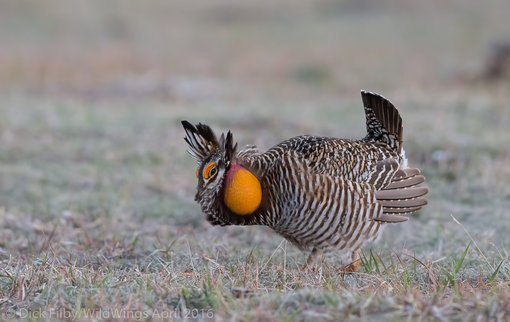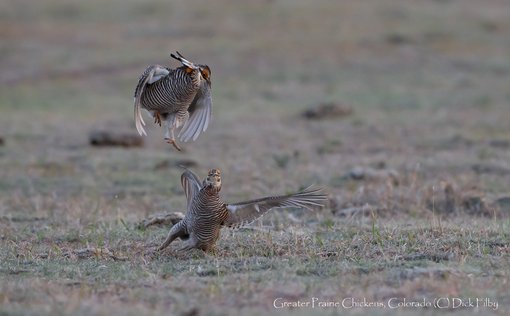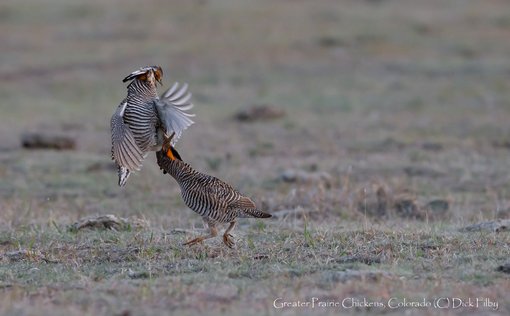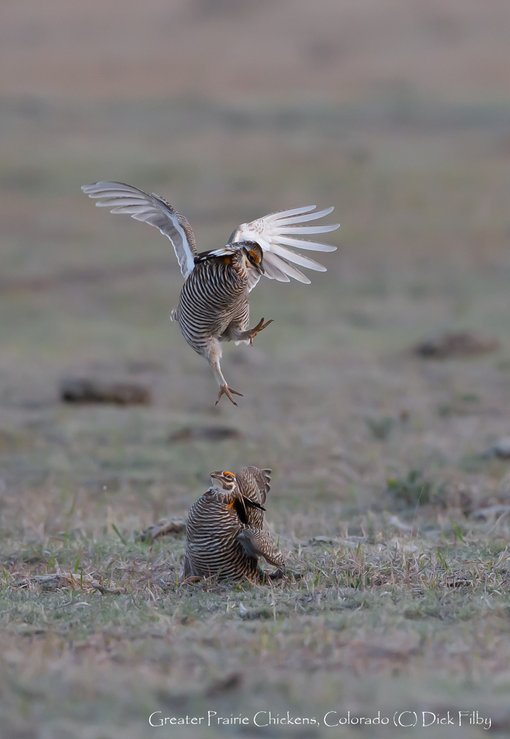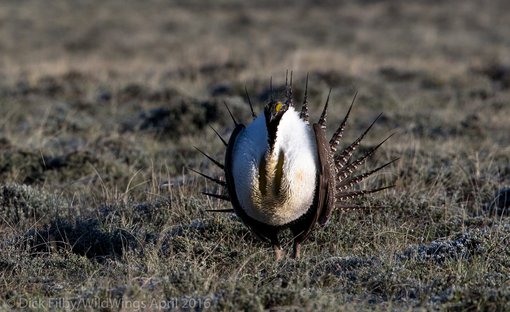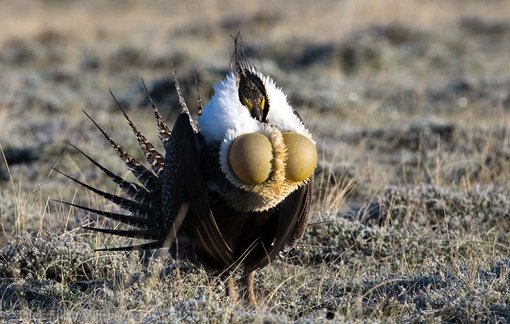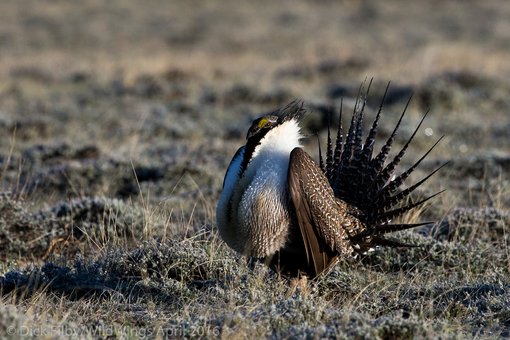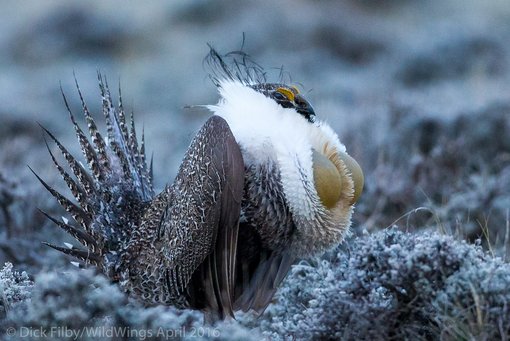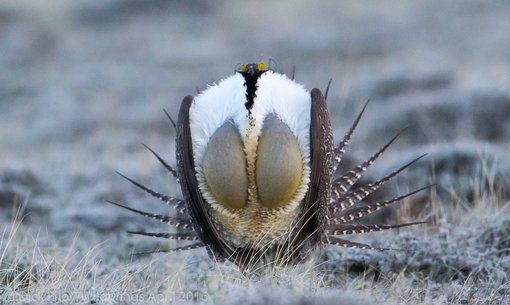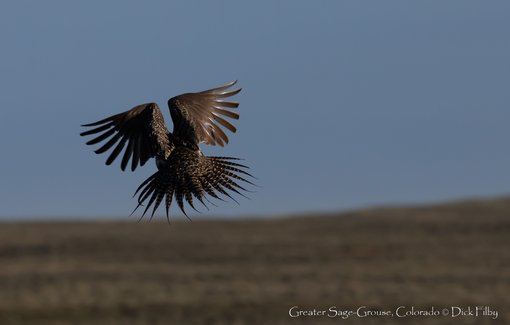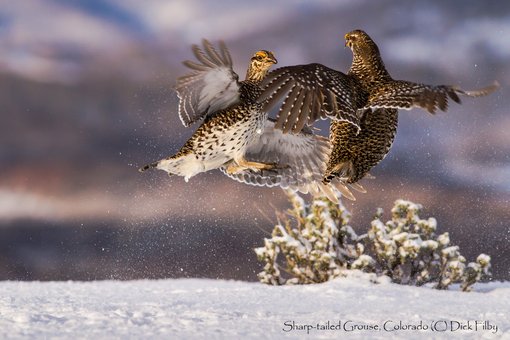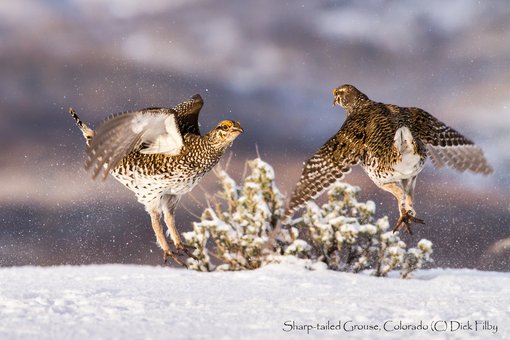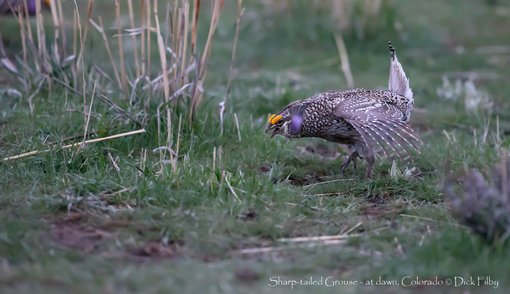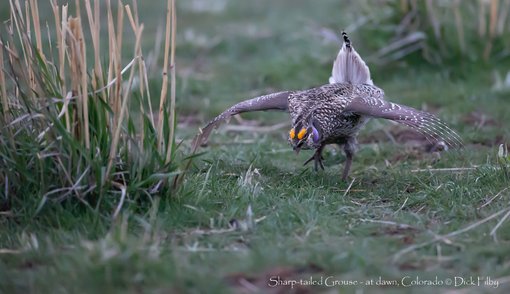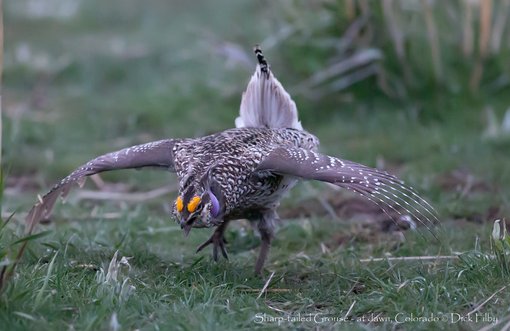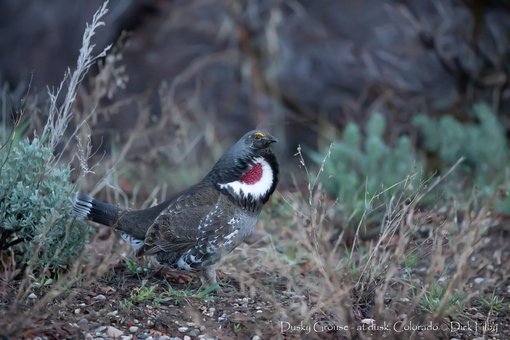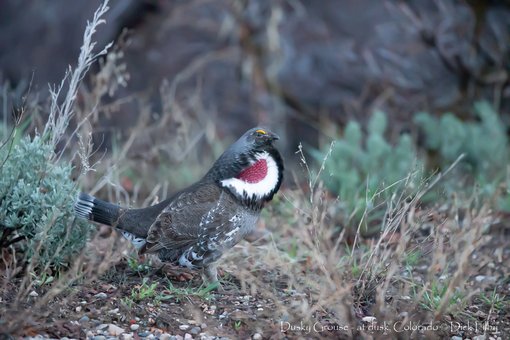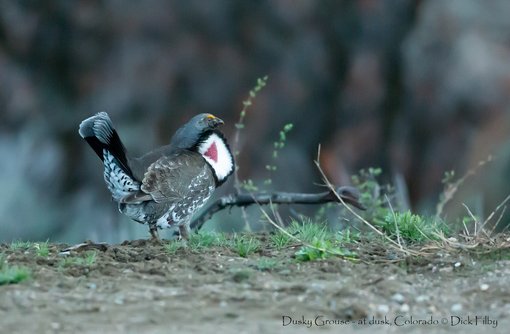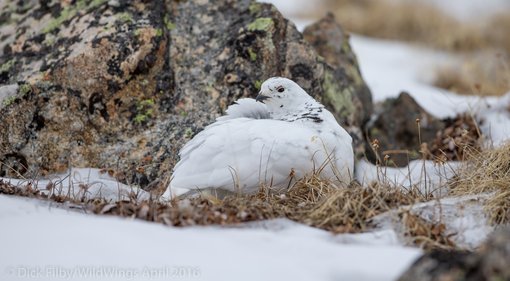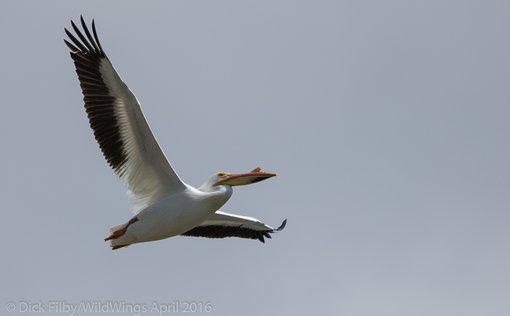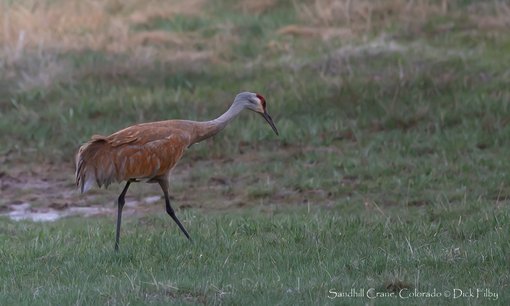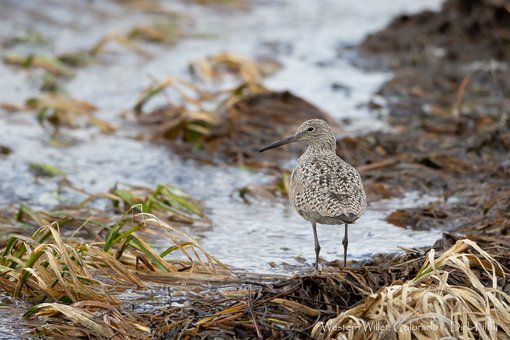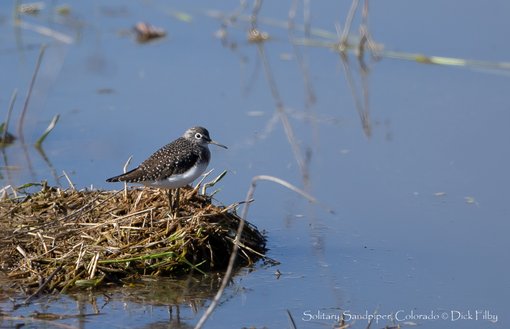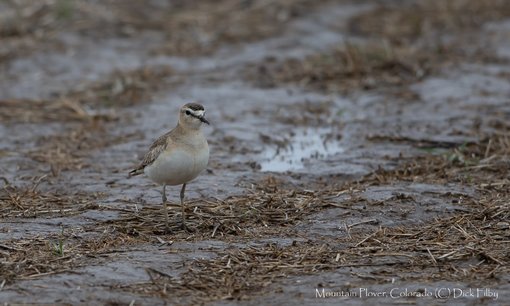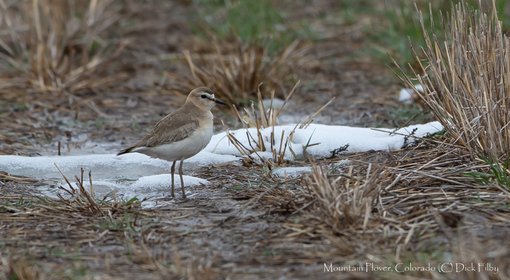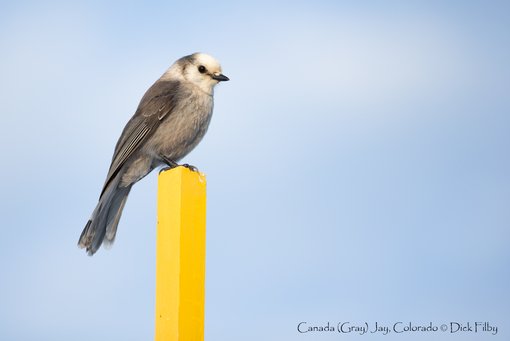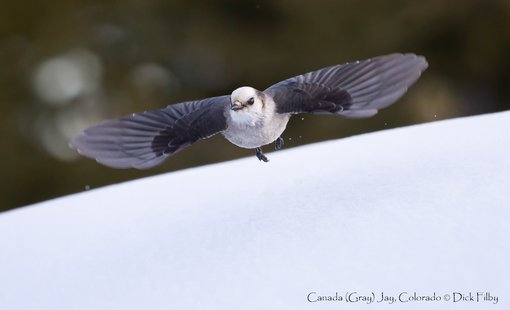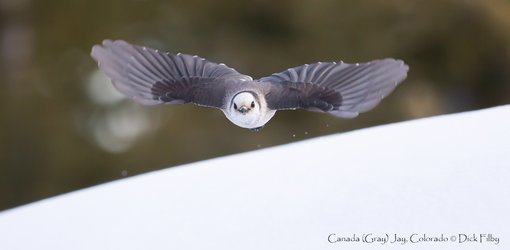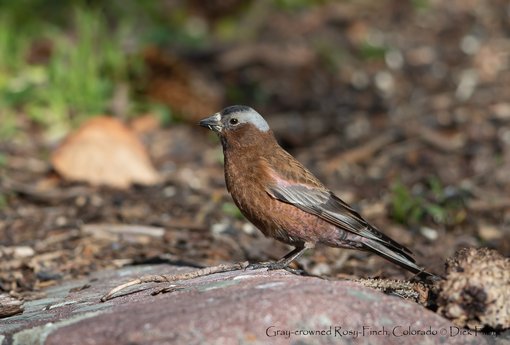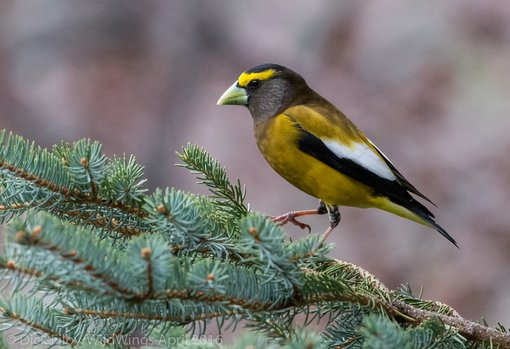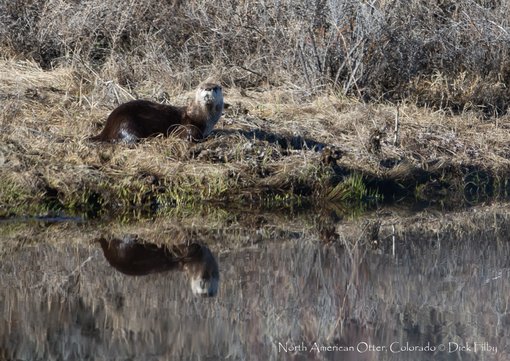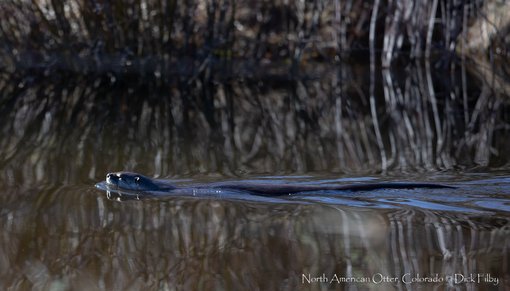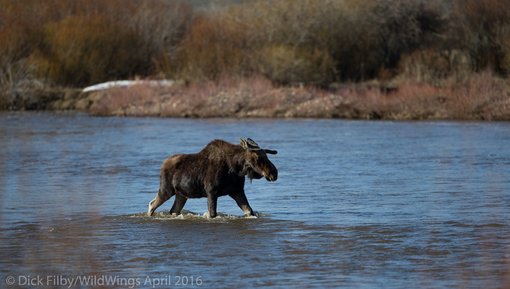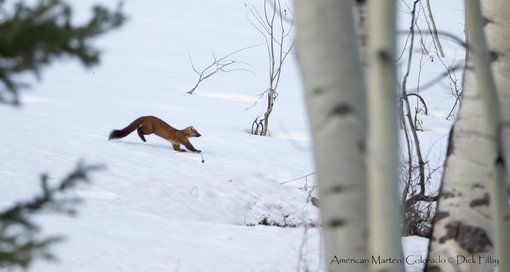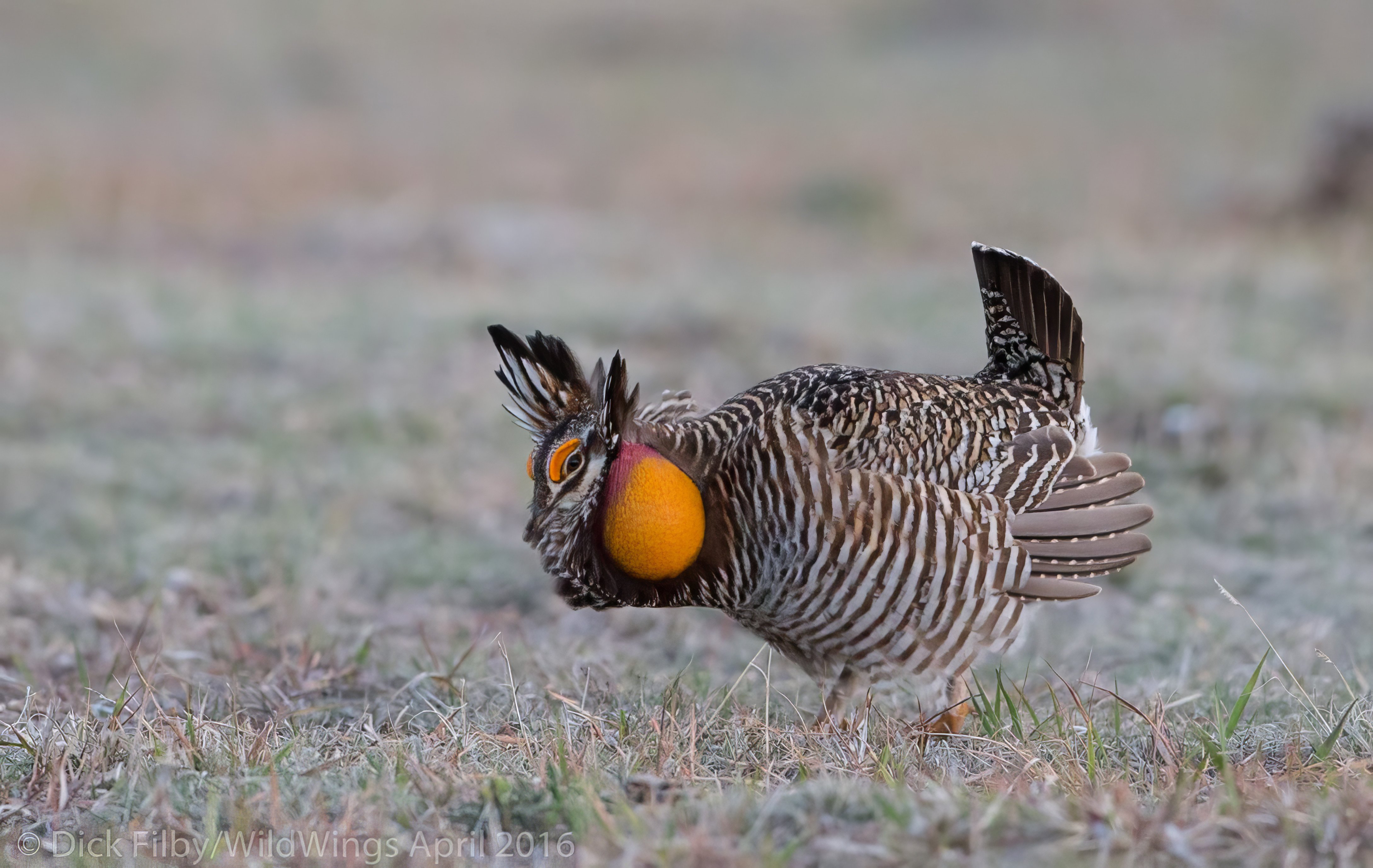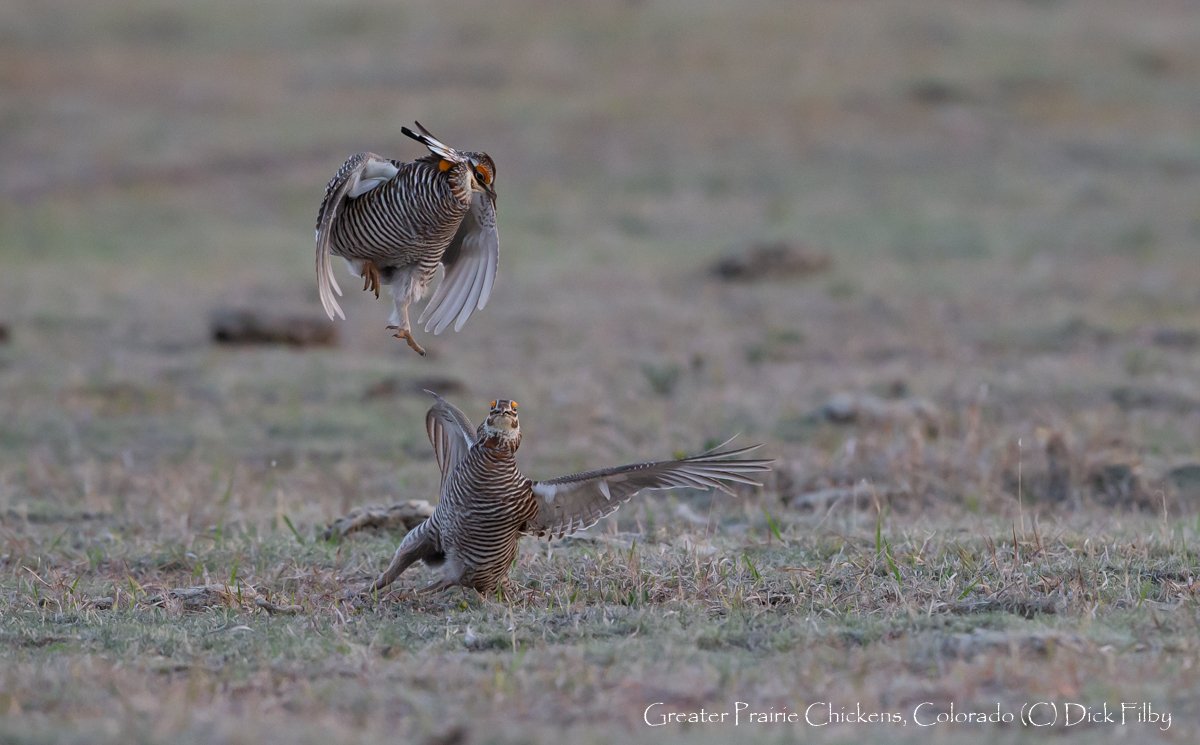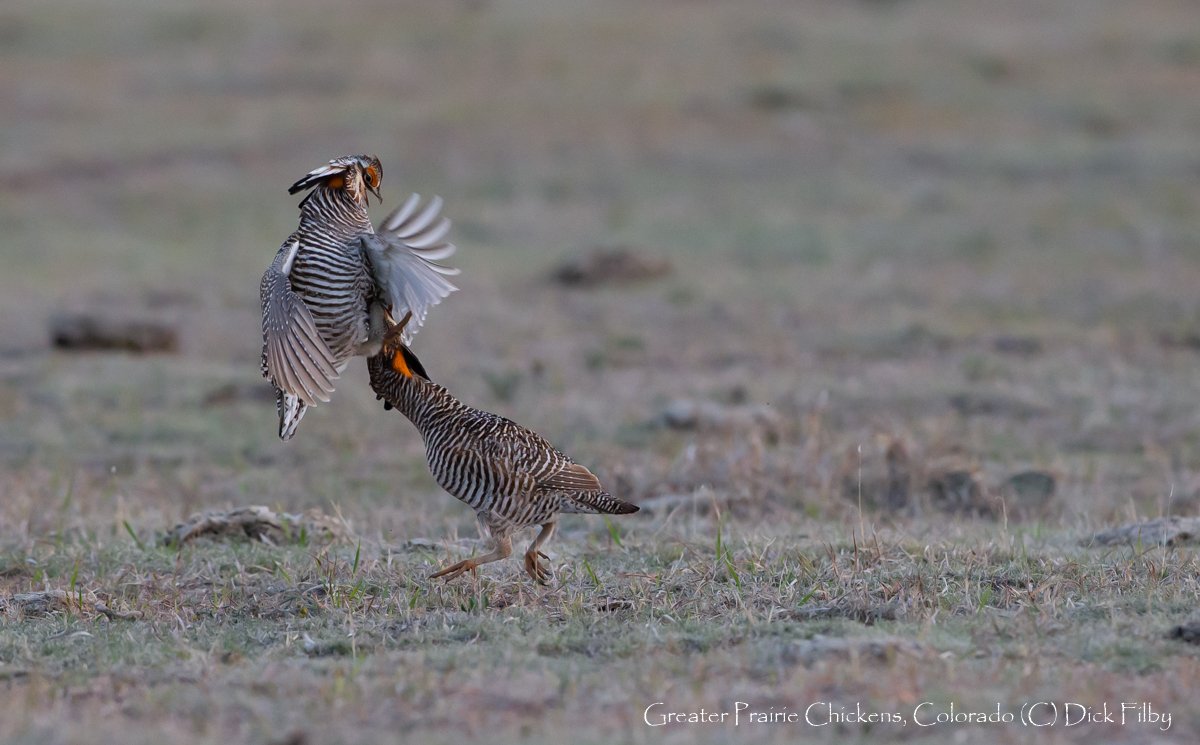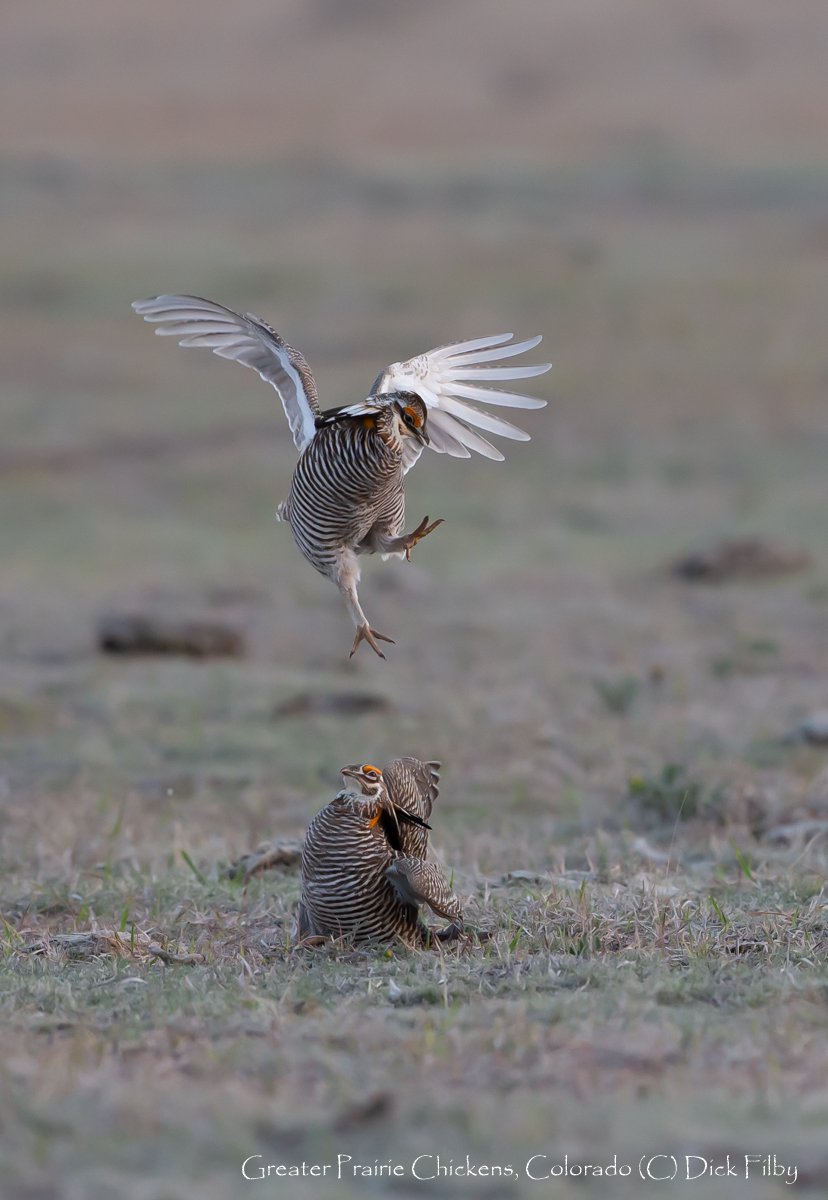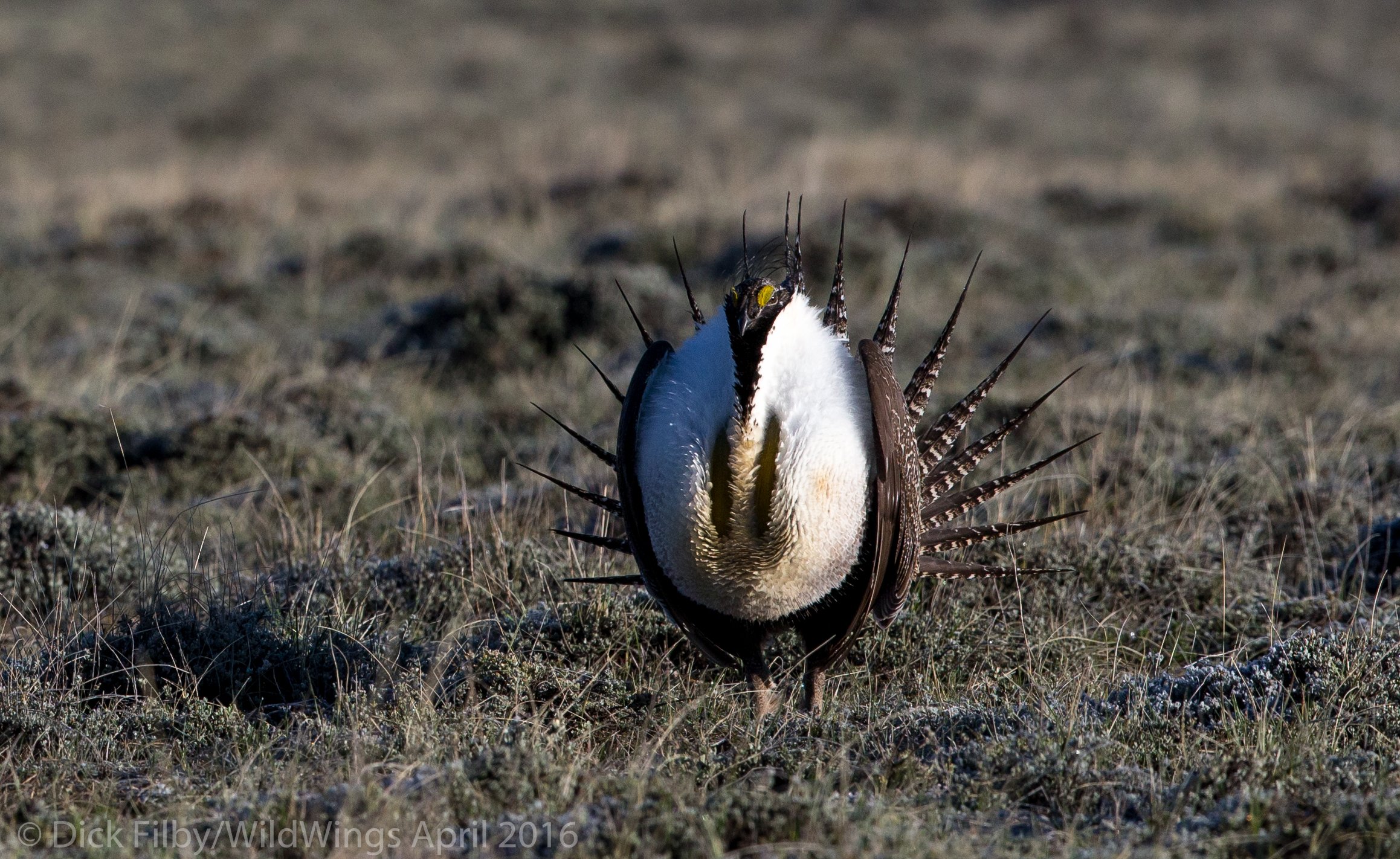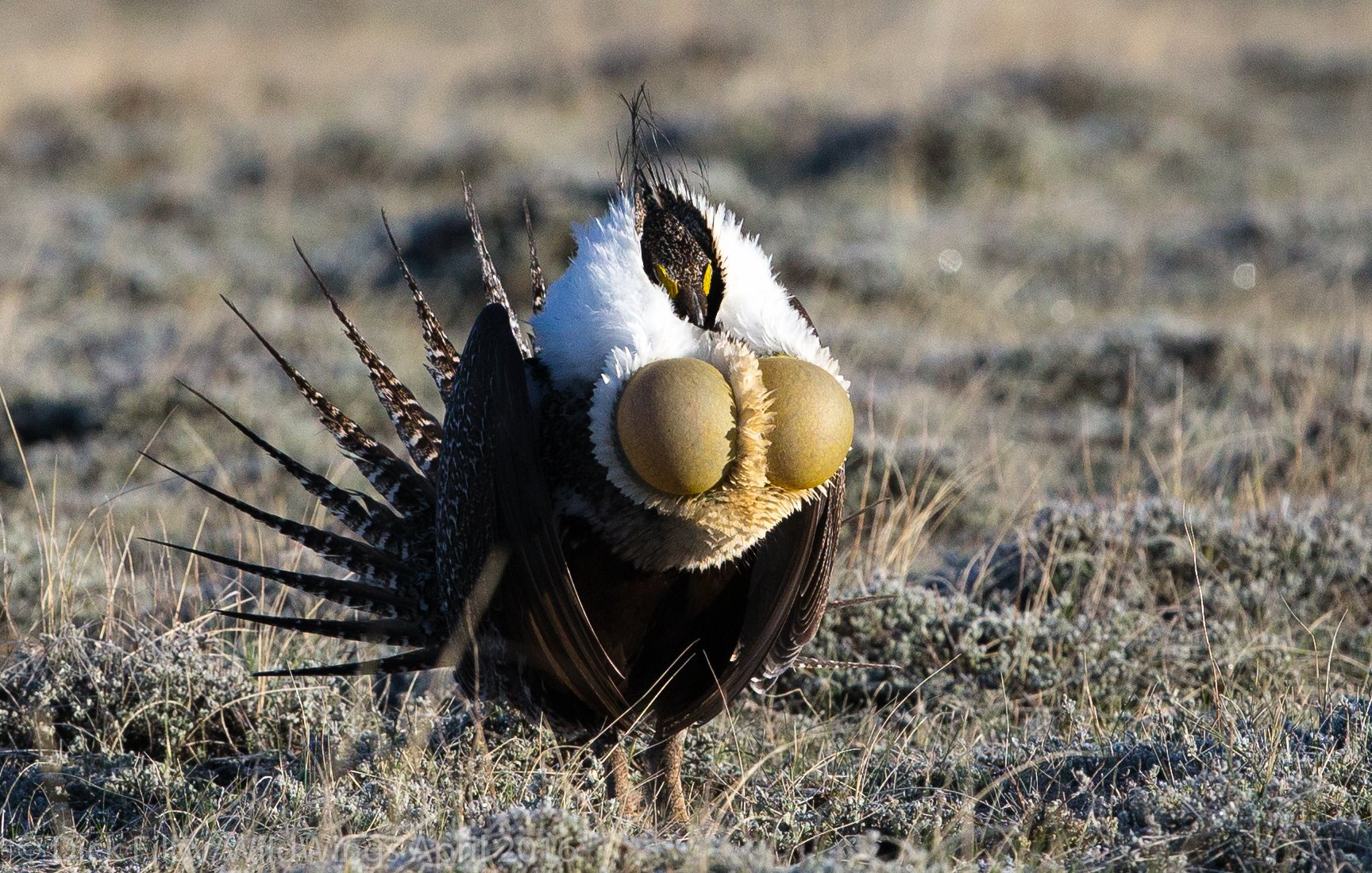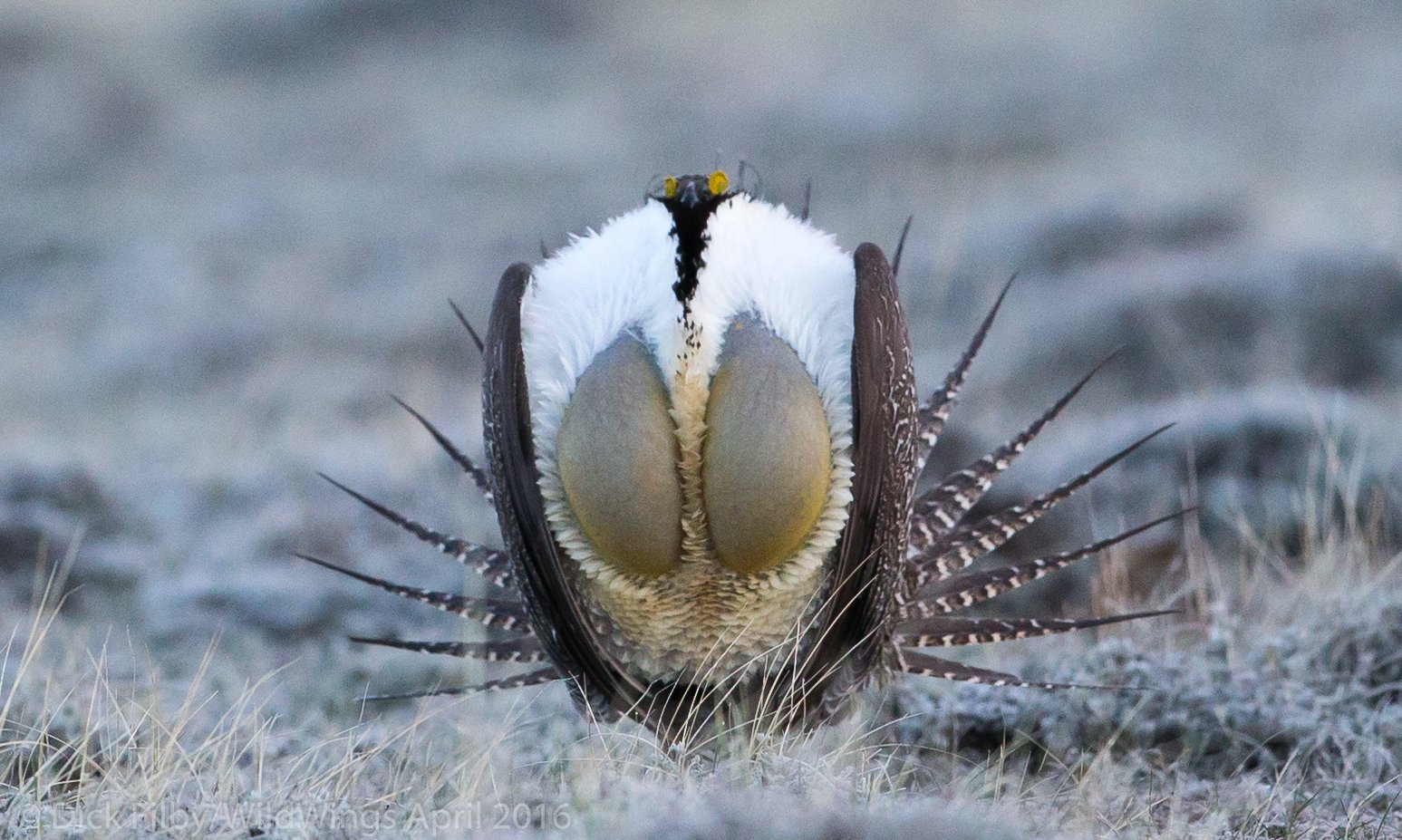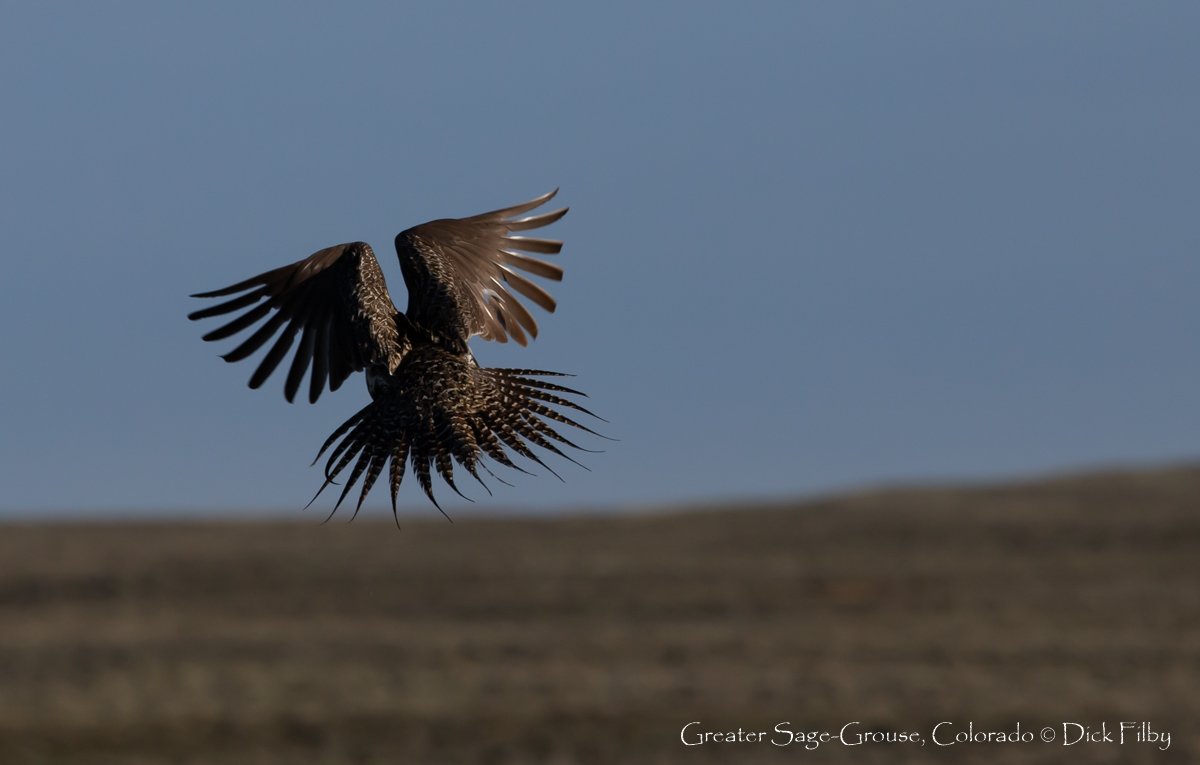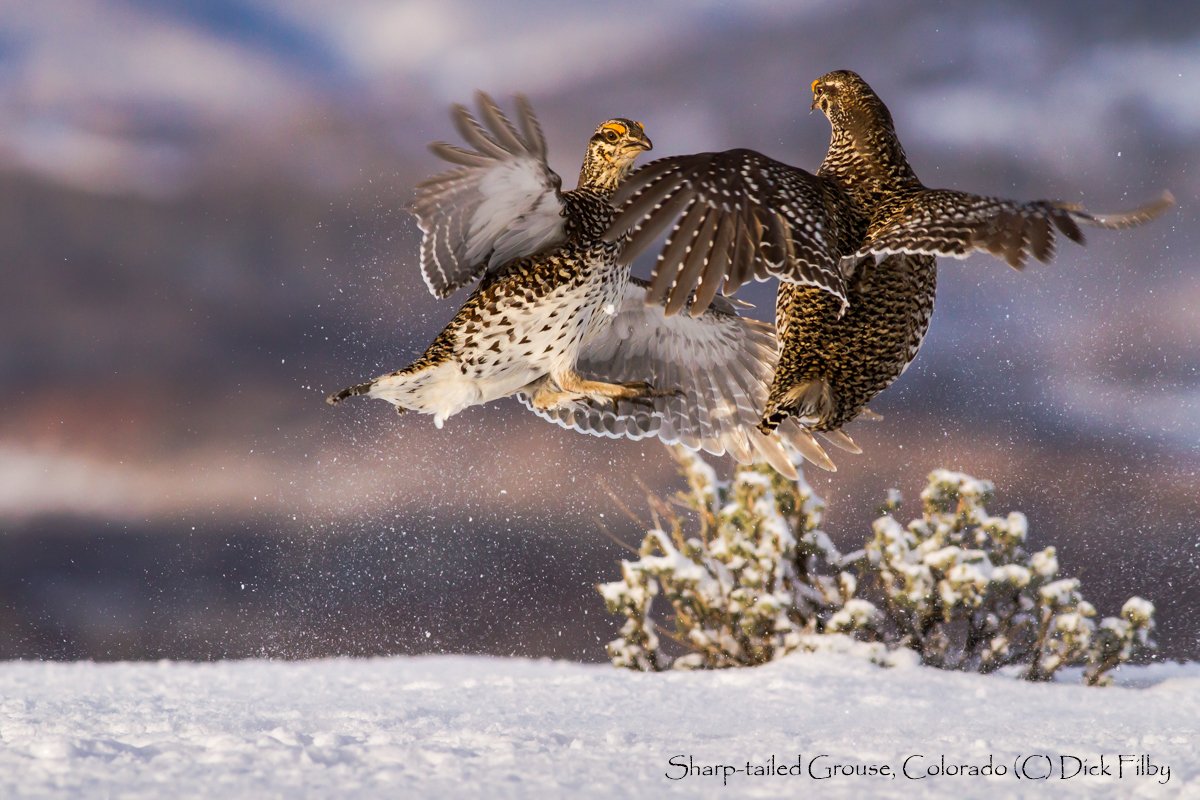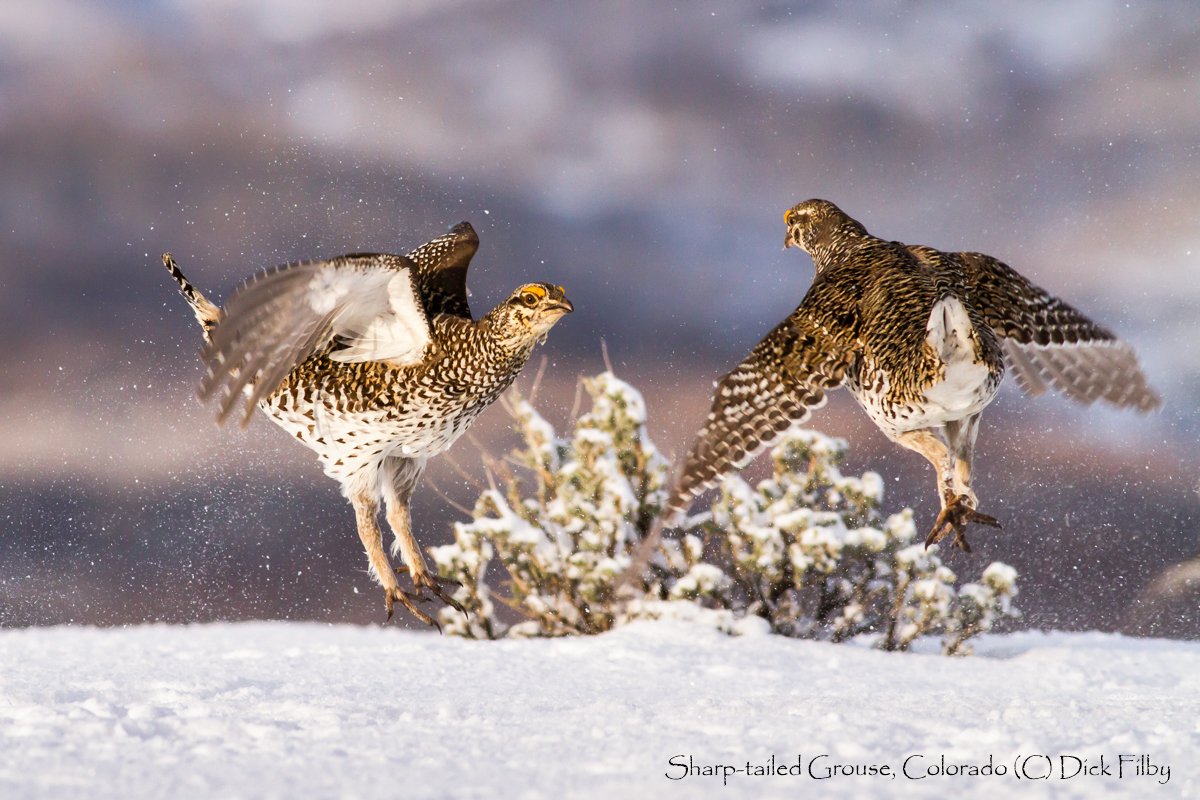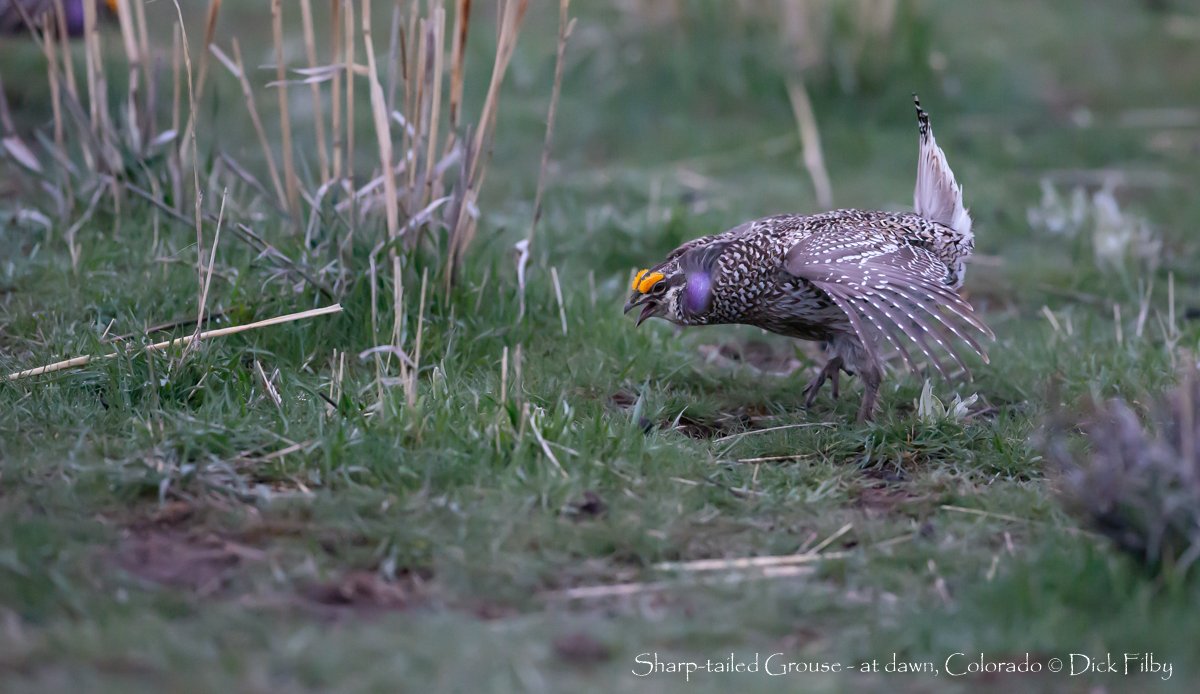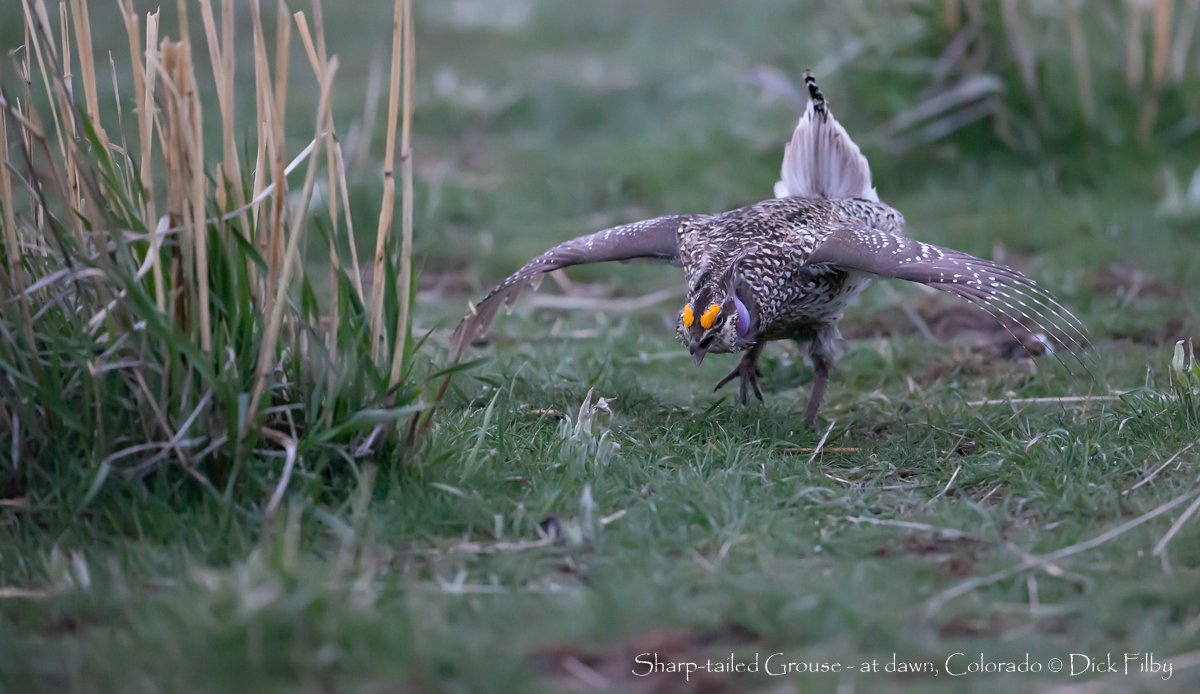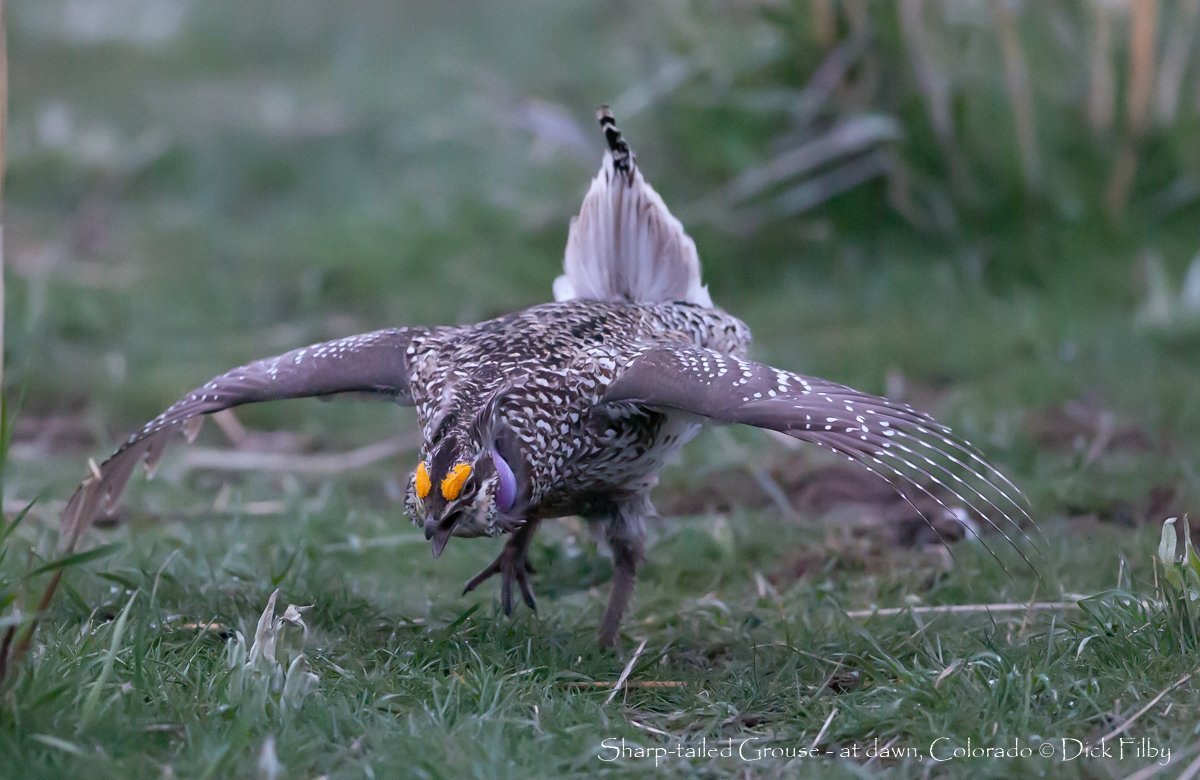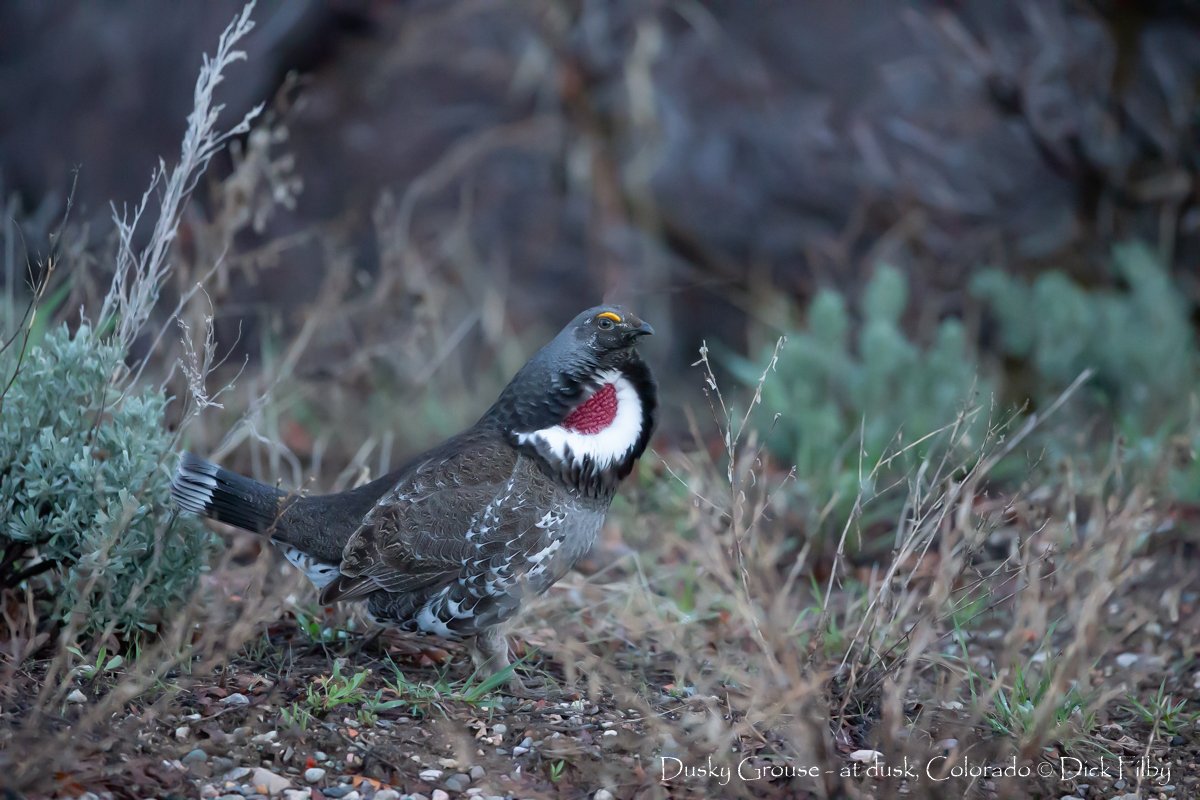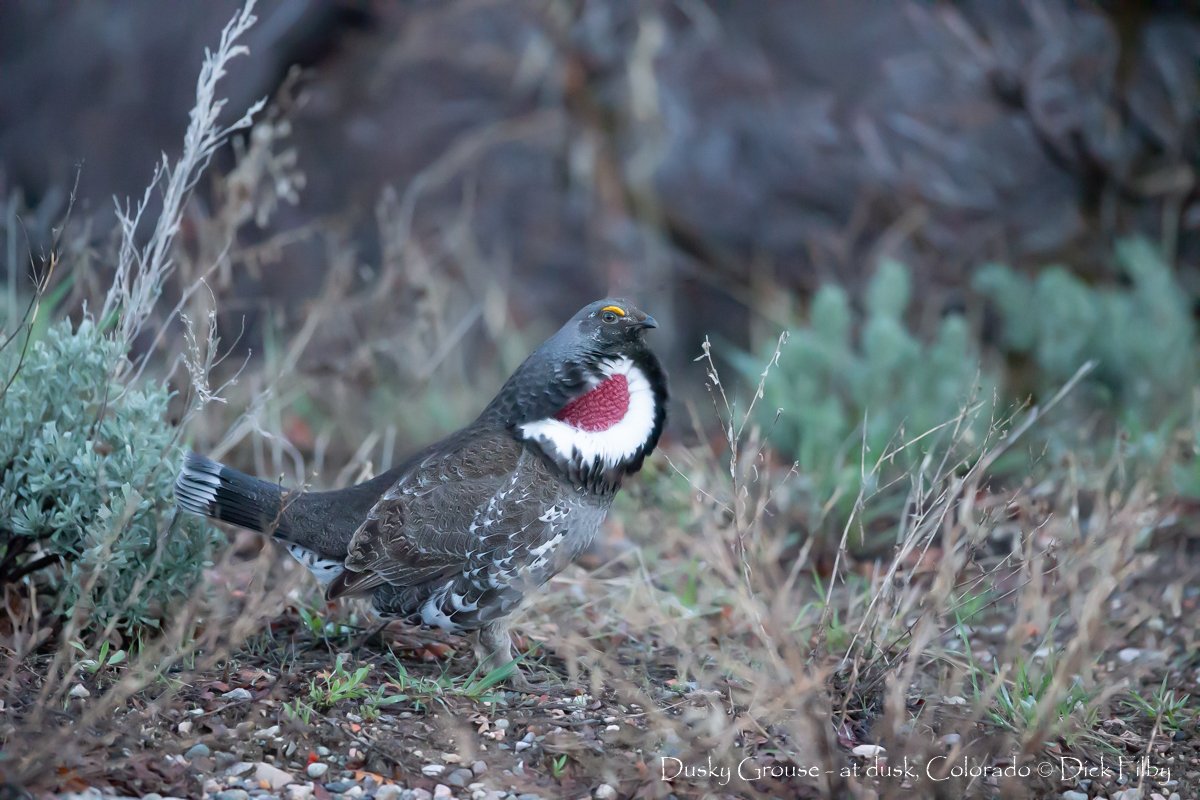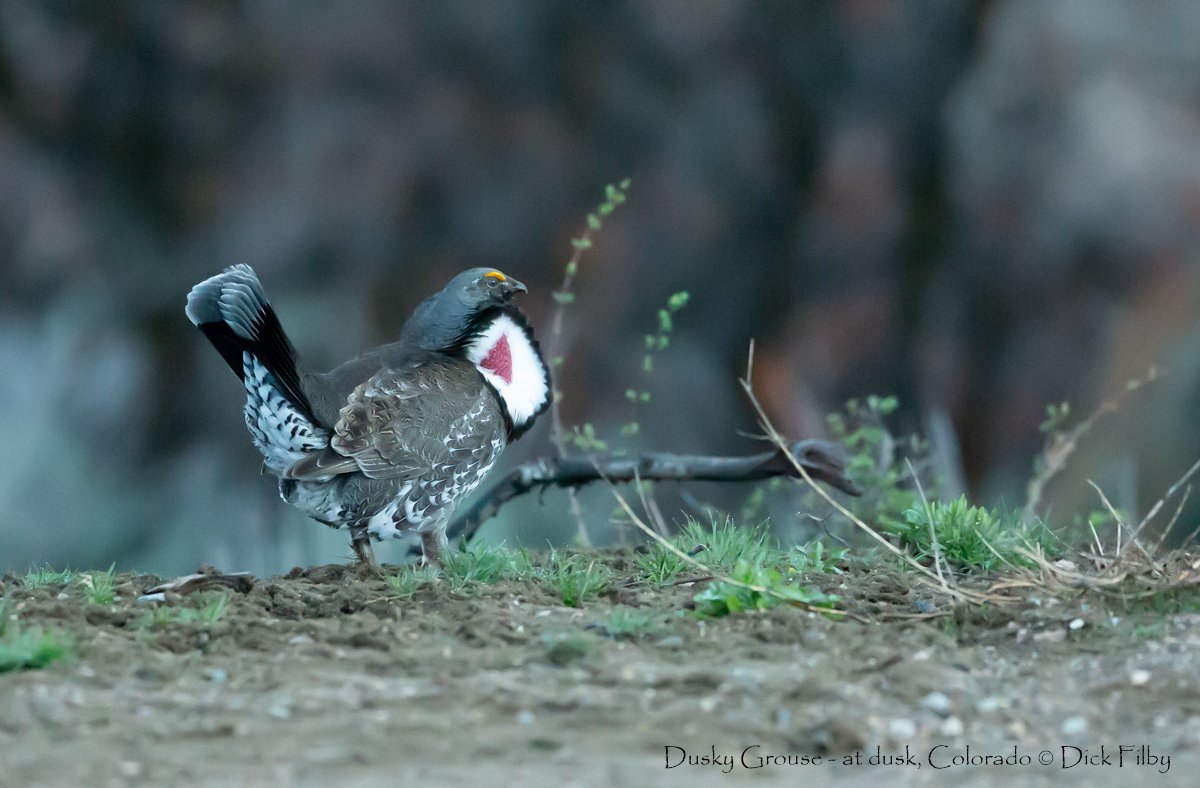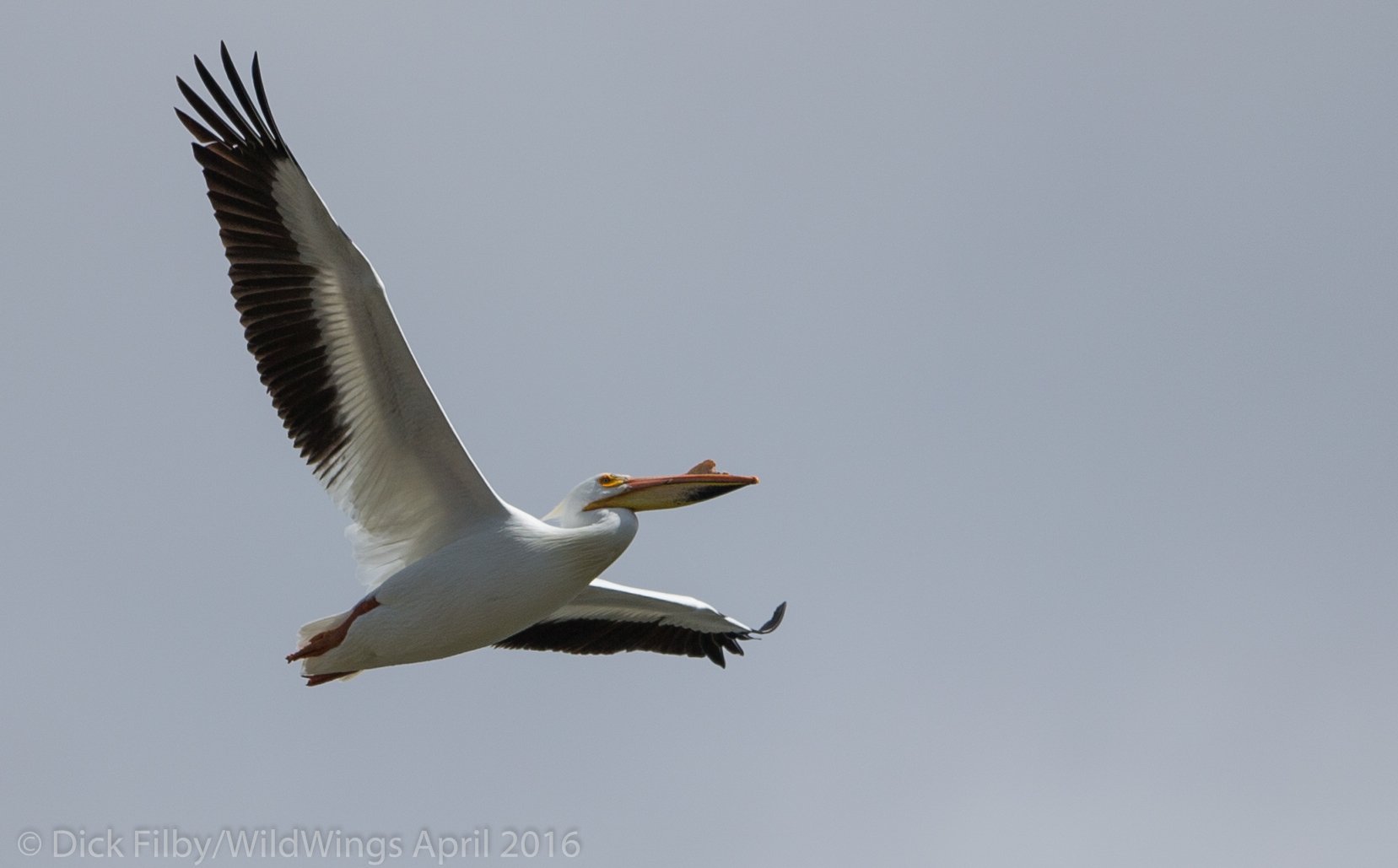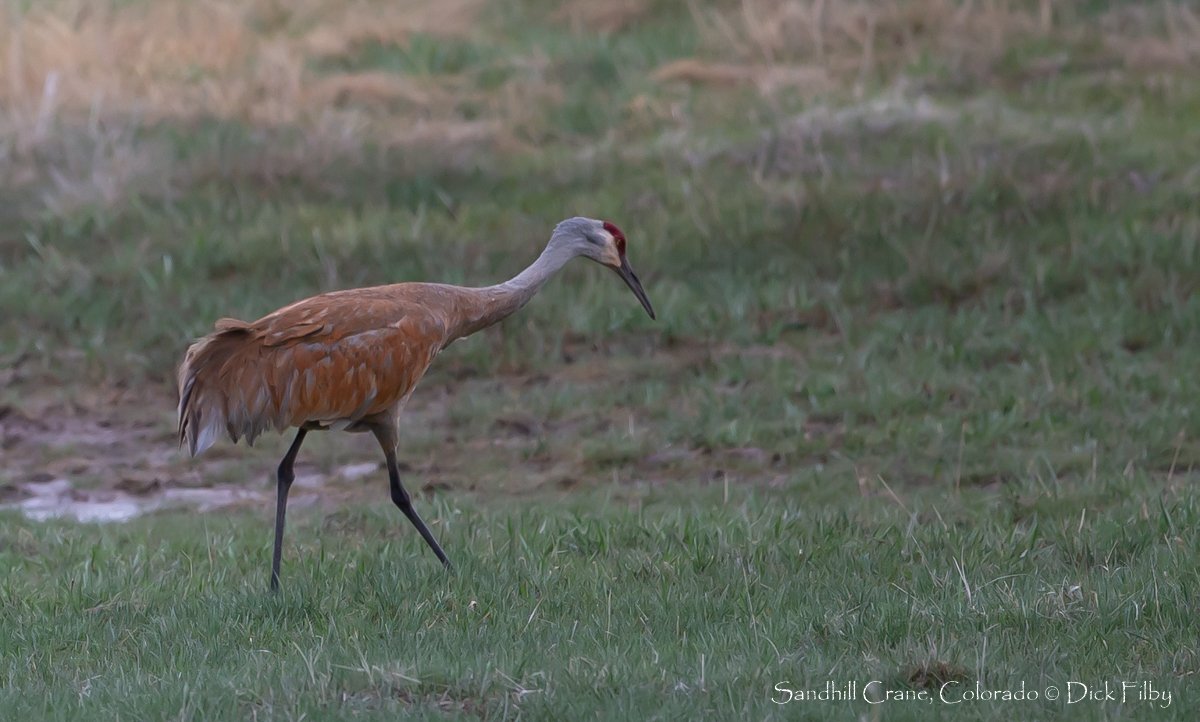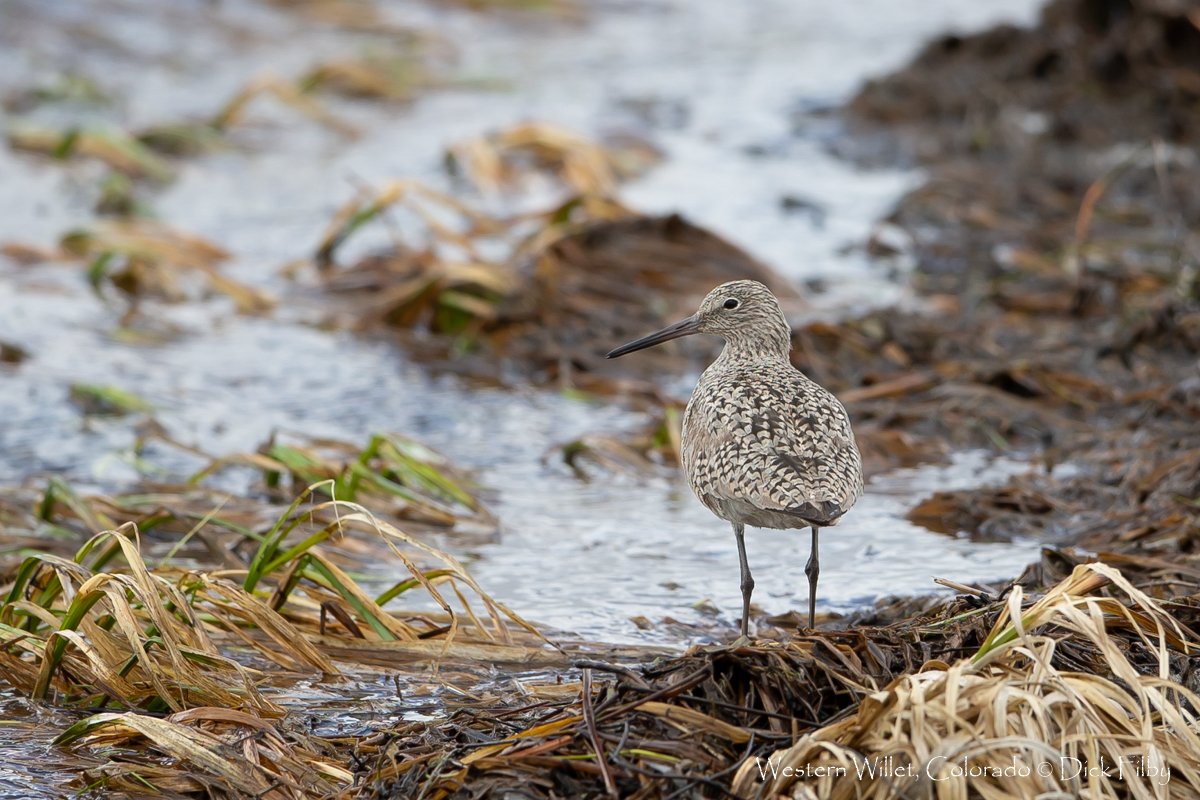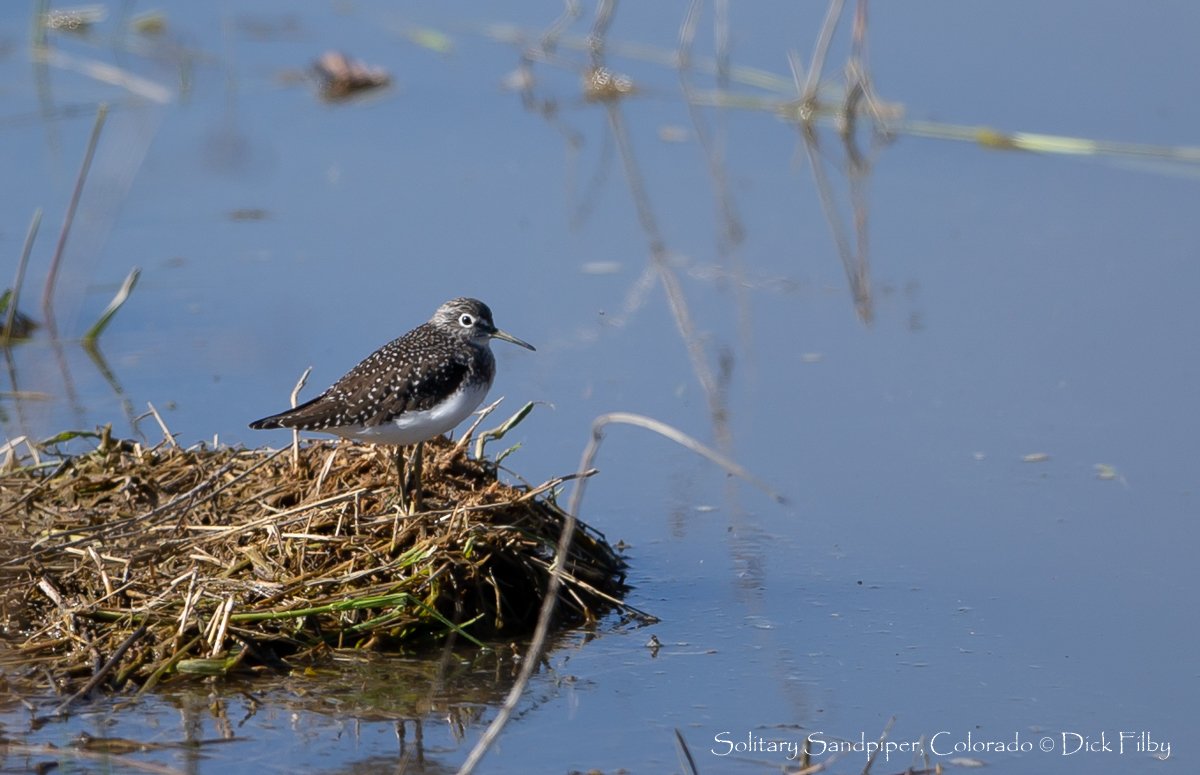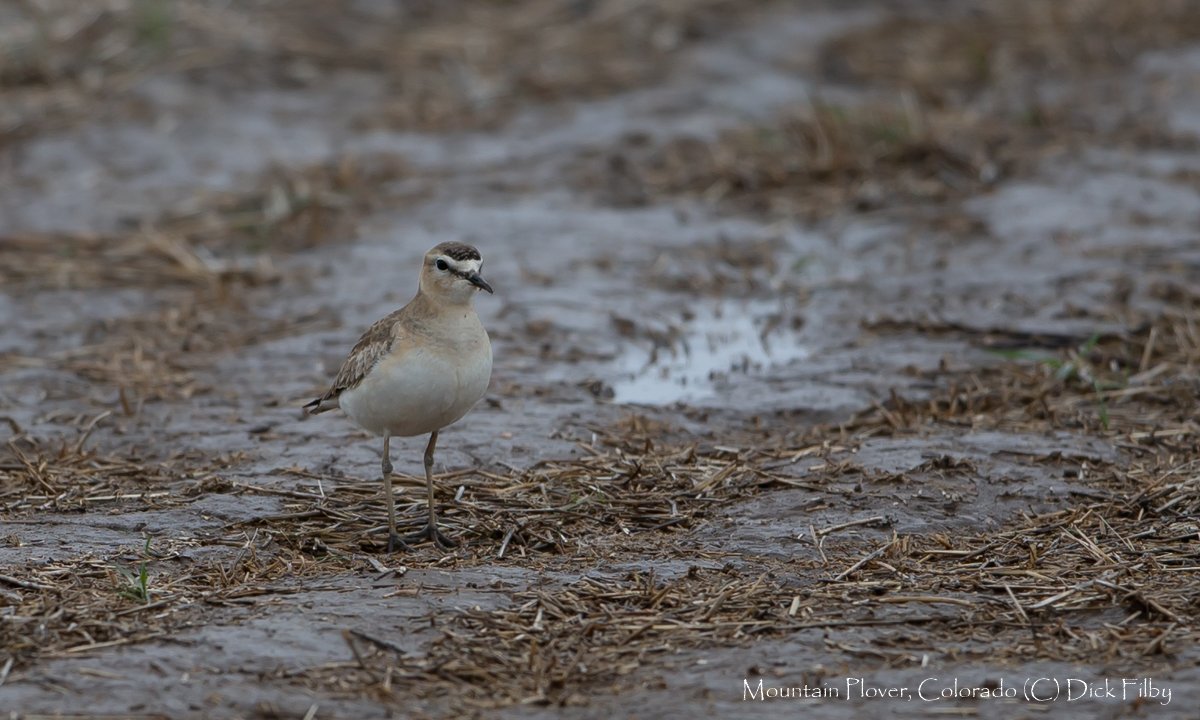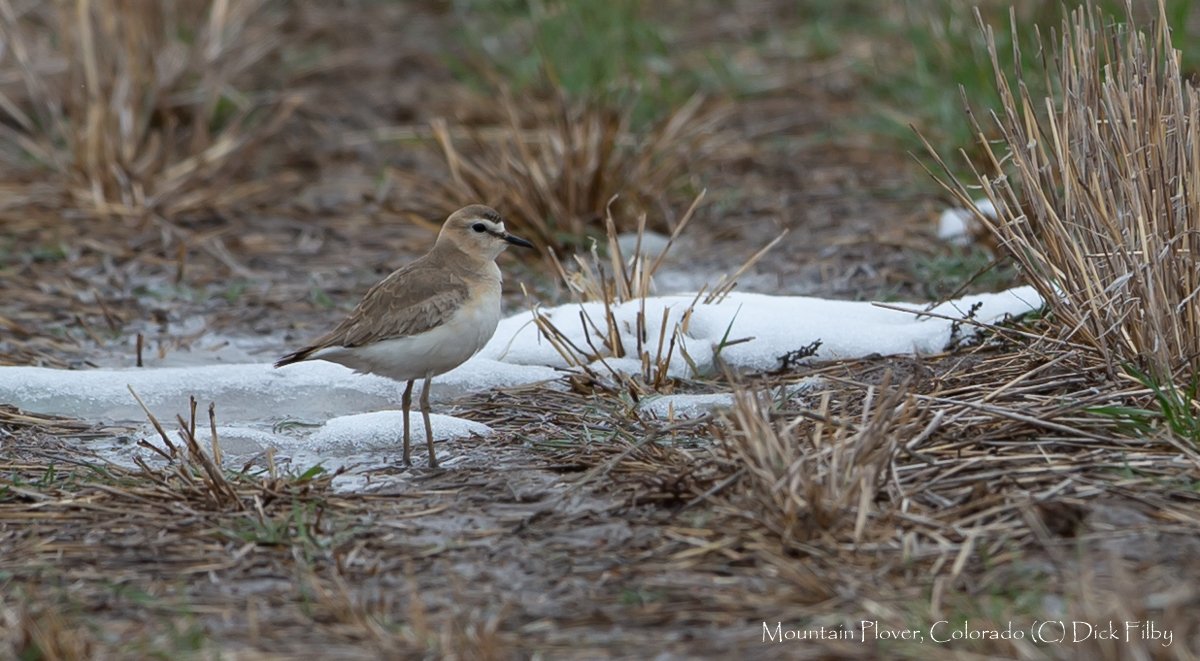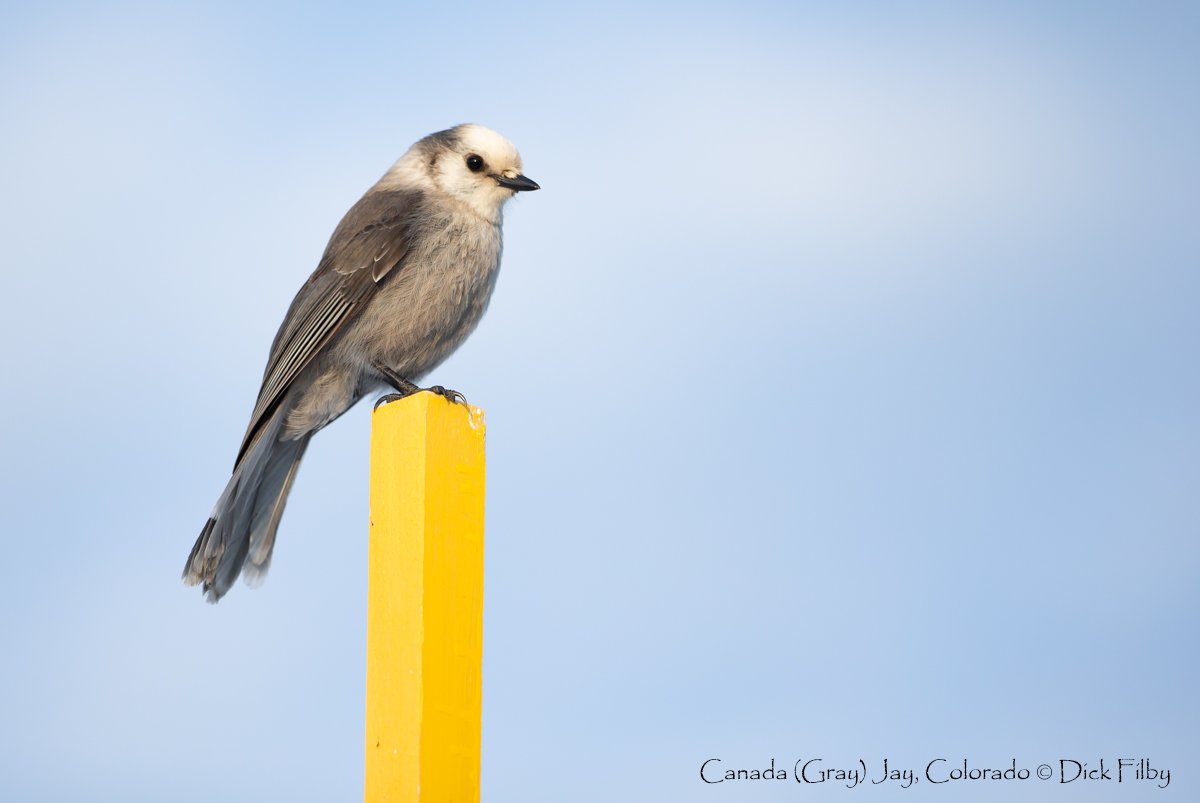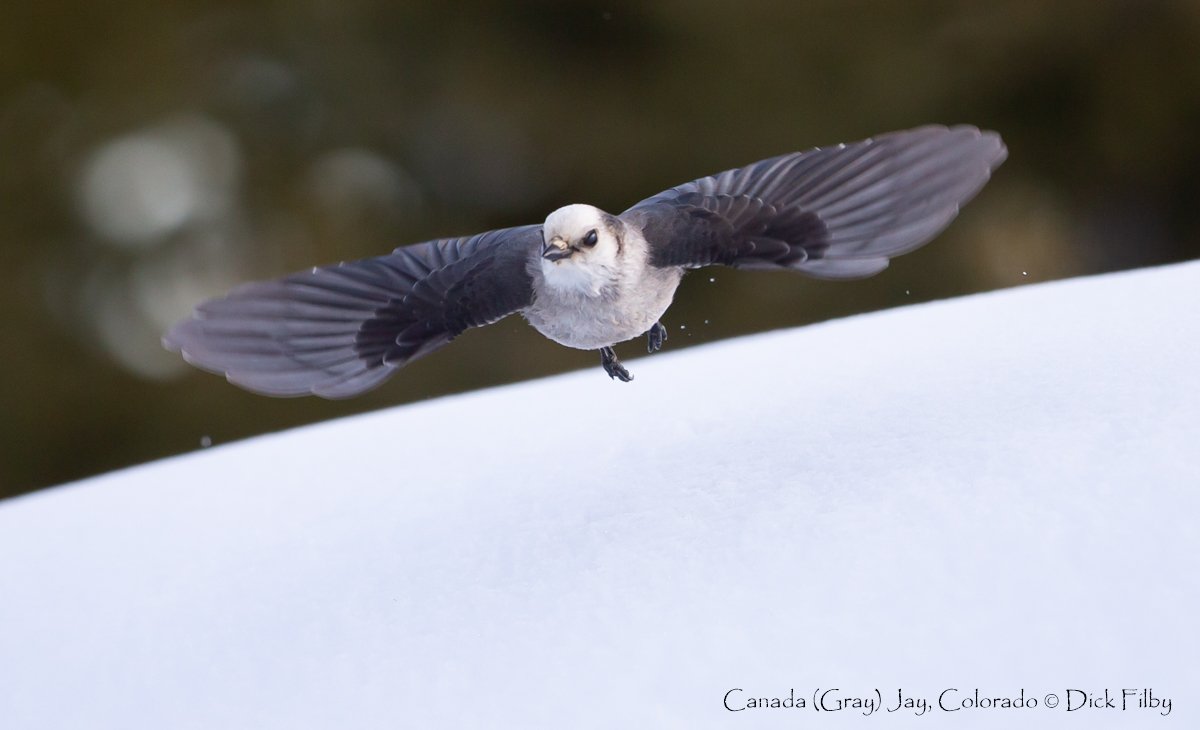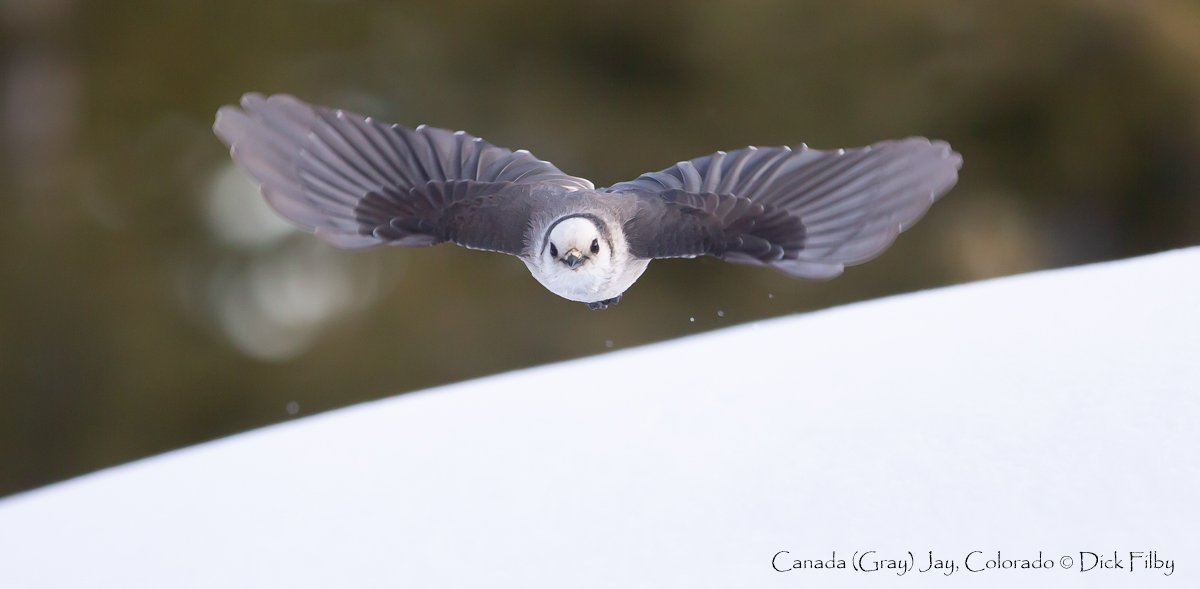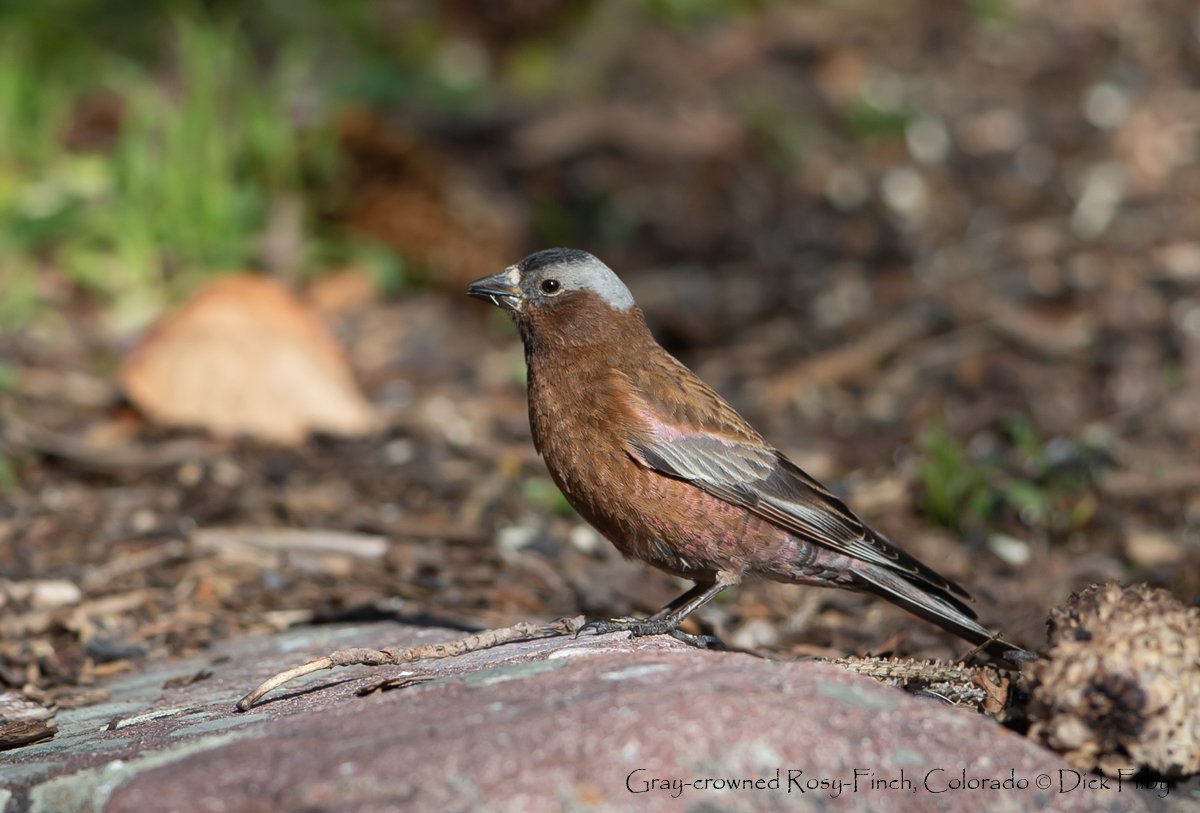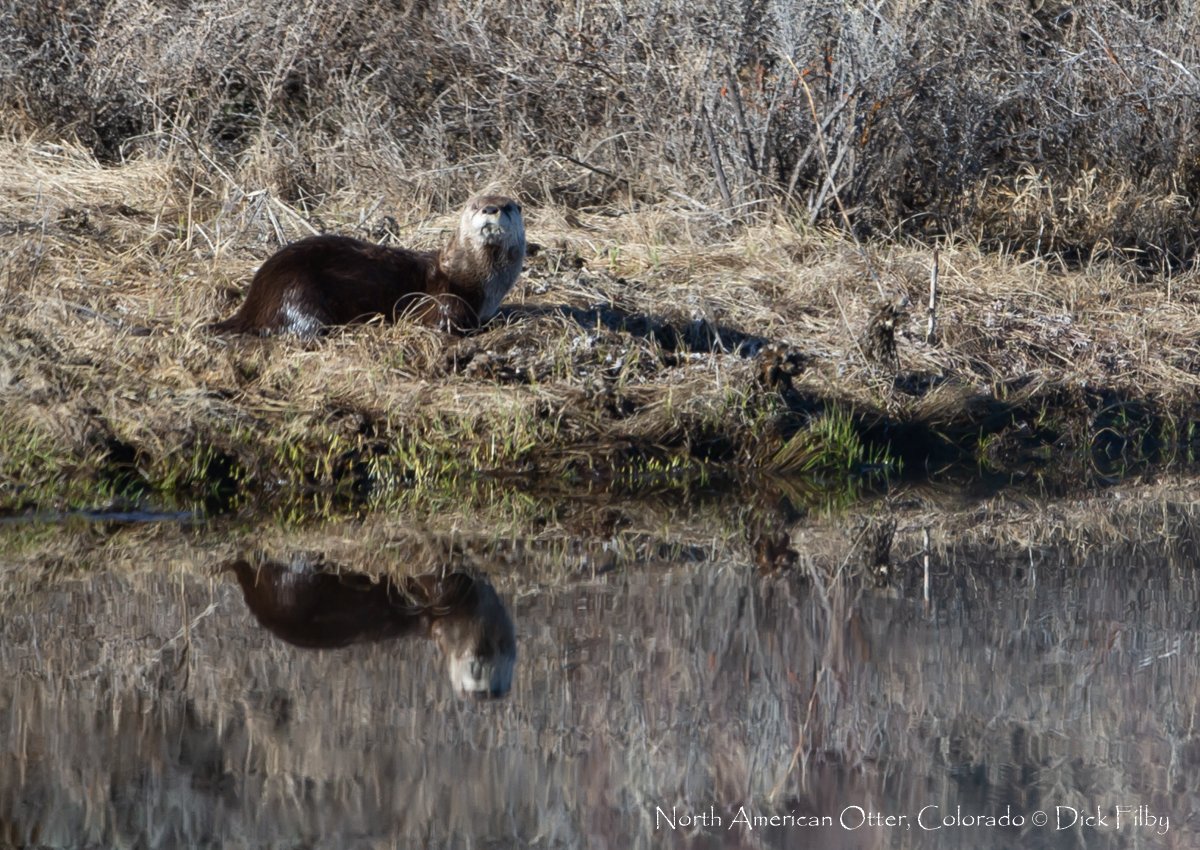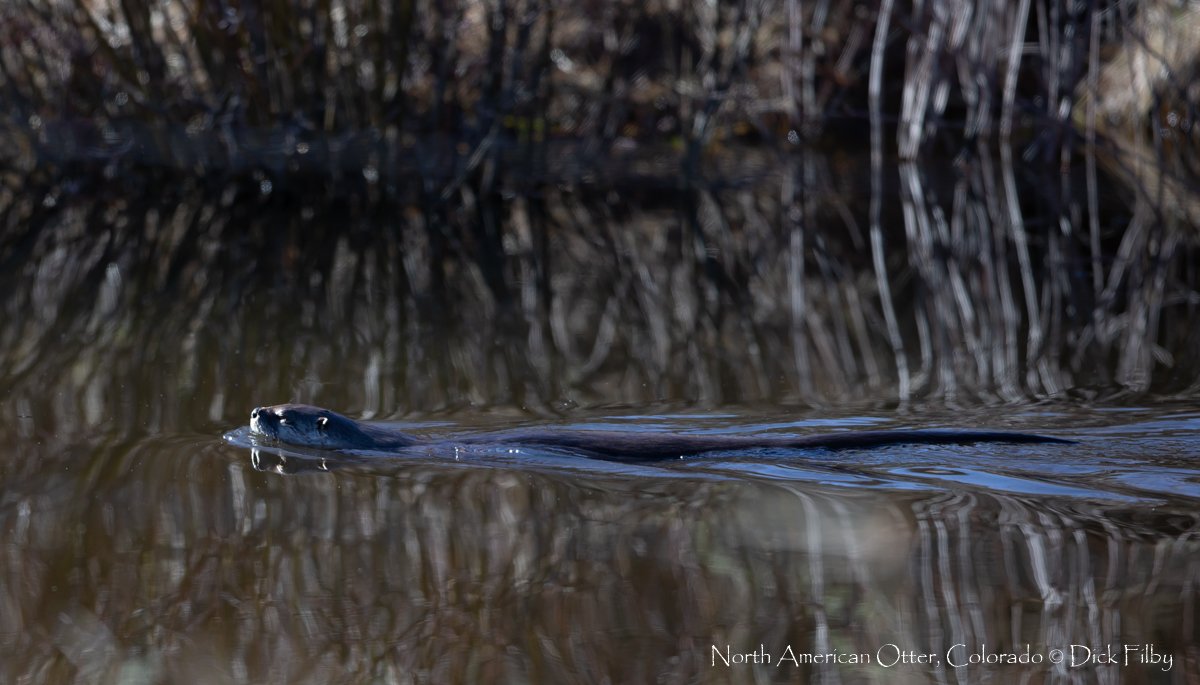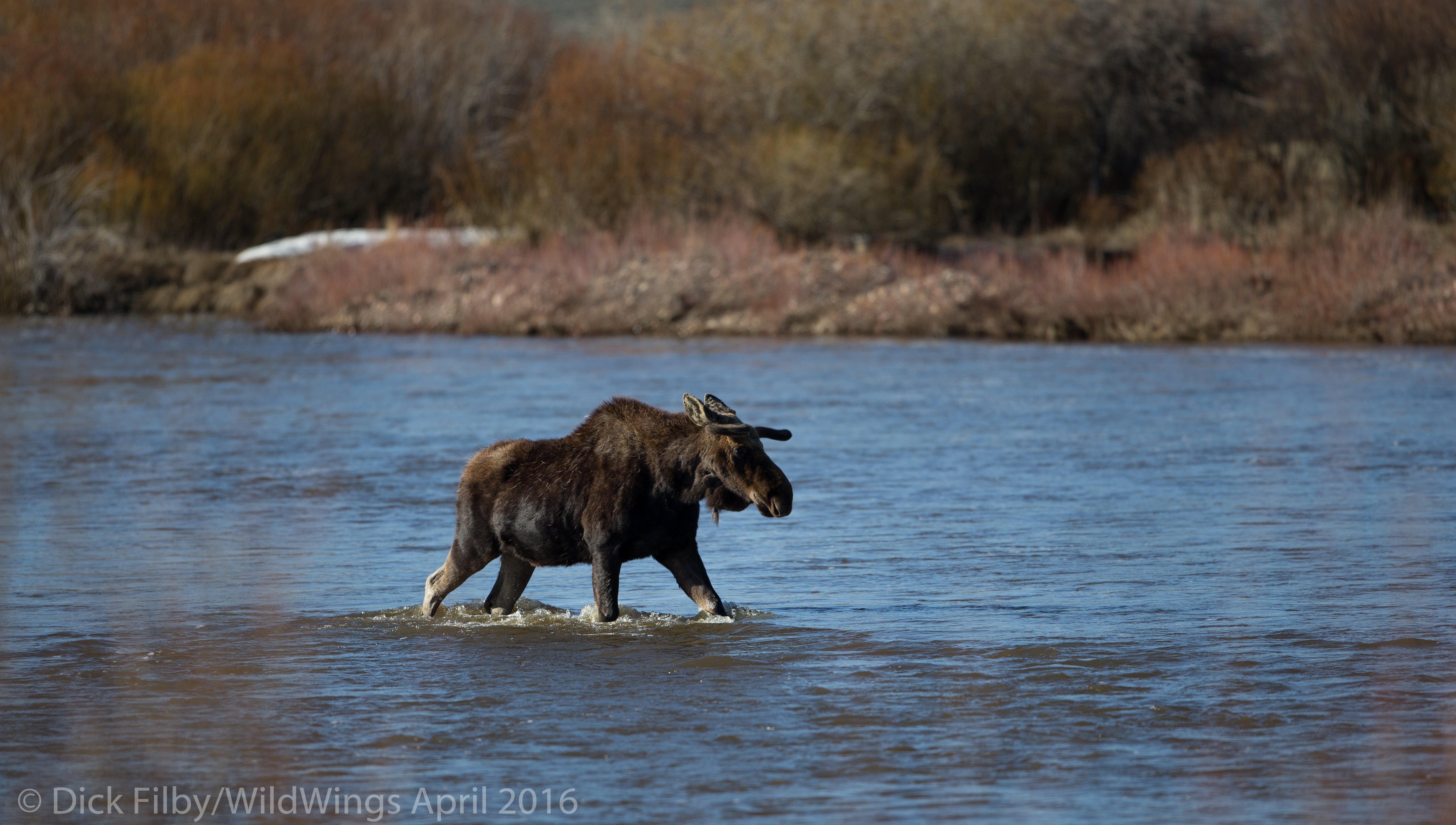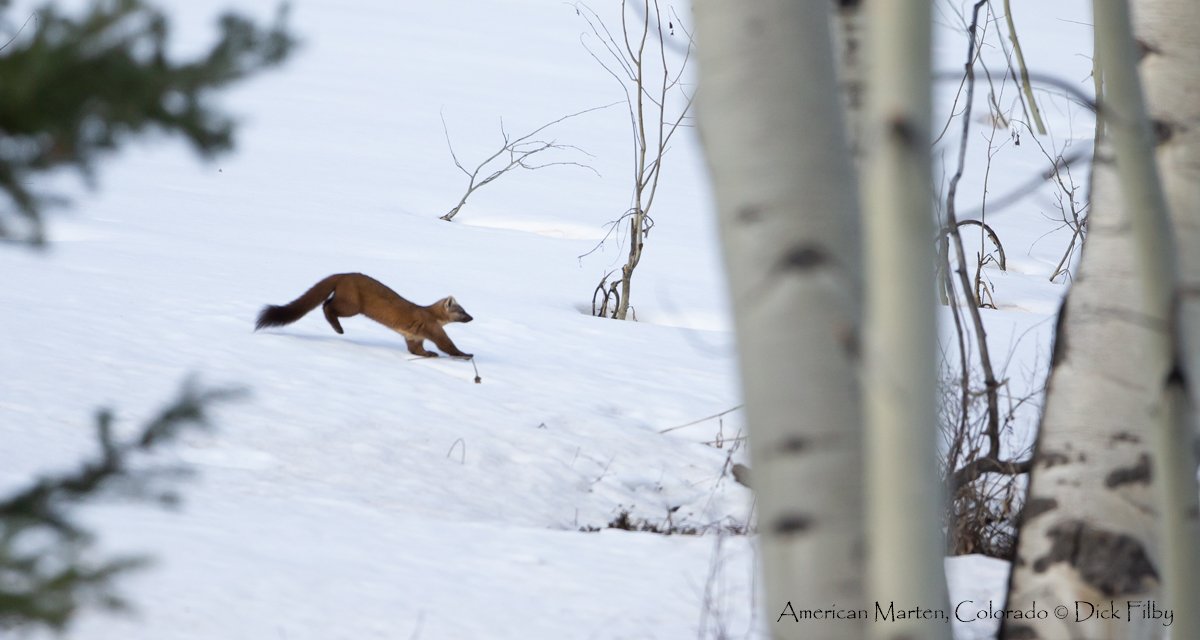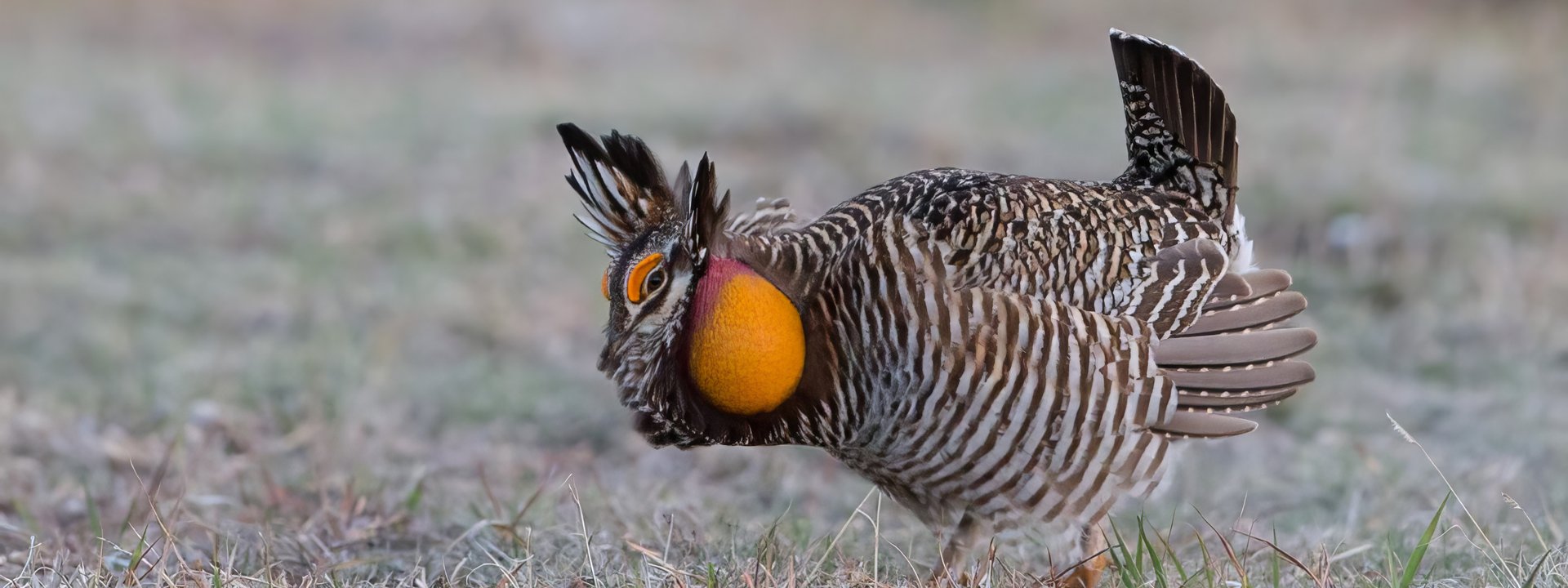USA
Colorado
The Grouse Leks of the High Plains and Rocky Mountains
This extremely popular tour led by Dick Filby has been running for well over a decade and combines great birding, lots of mammals and incredible scenery, making it one of WildWings’ most popular trips.
The primary focus of this trip are the grouse leks and there are more grouse species found in Colorado than anywhere else in North America. Indeed, there is no better place to view them!!
The leks are totally spellbinding with some of the most incredible display rituals in the avian world with each species having its own unique and bizarre performance. We will position ourselves at each lek prior to dawn and thrill as the spectacle unfolds as the sun rises.
We plan to visit leks of Greater Sage-Grouse, Gunnison Sage-Grouse, Sharp-tailed Grouse, Greater Prairie Chicken and Lesser Prairie Chicken and will also look for displaying Dusky Grouse and Wild Turkeys, coveys of Scaled and Gambel’s Quails and hopefully the enigmatic and beautiful White-tailed Ptarmigan.
There are numerous other exciting birds to look for with possibilities including American White Pelican, Barrow’s Goldeneye, Hooded Merganser, Bald Eagle, Prairie Falcon, Sandhill Crane, Mountain Plover, American Avocet, White-throated Swift, Black-chinned and Broad-tailed Hummingbirds, Lewis’s, Red-bellied and Ladder-backed Woodpeckers, Williamson’s and Red-naped Sapsuckers, Western Kingbird, Steller’s, Woodhouse’s Scrub and Pinyon Jays, Clark’s Nutcracker, Mountain Chickadee, Pygmy Nuthatch, Rock, Canyon, and Marsh Wrens, American Dipper, Eastern, Western and Mountain Bluebirds, Sage and Curve-billed Thrashers, Green-tailed, Spotted and Canyon Towhees, Rufous-crowned, Brewer’s, Vesper, Lark, Fox, Lincoln’s and White-crowned Sparrows, Chestnut-collared Longspur, Yellow-headed Blackbird, Grey-crowned, Brown-capped and Black Rosy Finches, Lesser and American Goldfinches and Evening Grosbeak.
If the weather co-operates, we also plan to seek several species of owls including Burrowing, Western and Eastern Screech and Great Horned.
The list of mammals seen on this trip is truly mouth-watering and includes Mountain Lion (Puma), Bobcat, Black Bear, Bighorn Sheep, Mountain Goat, Moose, Elk, Pronghorn Antelope and many more.
Whilst this tour is not designed specifically for photographers, it offers some good chances at some (but not all) leks and of other birds too, although longer lenses are generally needed.
The trip is intended for birders who are prepared to go to bed early and get up very early. Basic fitness is essential, but with no long walks planned, this is not a physically demanding tour apart from the early starts. We will generally be birding from, or close to, the vehicle.
Tour Dates & Prices
Sat 5th April 2025
Fri 18th April 2025
- Available
Tour Cost: 14 Days from £3995*
* The price of this tour will be confirmed in early summer 2024. If we have to increase the cost by more than 5% then anyone who has booked can cancel and have their deposit returned.
What's Included?
- WildWings Tour Leader
- 12 nights accommodation in Colorado
- Minibus transport
- All excursions and entry fees
- Checklist of birds for the tour
Cost Excludes
International flights, insurance, ESTA, meals (please see "Trip info" tab), drinks, tips and other items of a personal nature.
Notes
The Land Only Tour Cost is the amount you will pay WildWings.
Despite the end of pandemic restrictions, we have taken the decision to continue to price our holidays as excluding international flights.
To keep the process as simple as possible, we are working very closely with a dedicated agent at Travel Counsellors, Sacha Barbato, who is essentially now our “in house” flight consultant.
Sacha is a highly experienced independent ATOL bonded travel agent, and his contact details are as follows: [email protected] and 01603 360099
He will be able to advise you which flights we are recommending for each holiday and will be able to book these for you.
This will also sometimes give you the option to travel from a regional airport if you prefer.
Tour Highlights
- visits to the leks of some of North America's amazing grouse including Greater Sage-Grouse, Gunnison Sage-Grouse, Sharp-tailed Grouse, Greater Prairie Chicken and Lesser Prairie Chicken
- explore the scenic Rocky Mountains for the enigmatic and beautiful White-tailed Ptarmigan
- look for a great range of other birds with the possibilities including Prairie Falcon, Sandhill Crane, Mountain Plover, American Avocet, Red-naped Sapsucker, Clark’s Nutcracker, Pygmy Nuthatch, Mountain Bluebird and Canyon Towhee
- a nice selection of North American mammals with, for example, 29 species recorded on two recent trips.
- enjoy the endless vistas of the High Plains and in the Rocky Mountains see dramatic peaks capped in snow towering over great forests and deep gorges carved by gushing rivers
- good photographic opportunities
- small group with only seven participants
- led by WildWings leader and part-time Colorado resident, Dick Filby
Outline Itinerary
Fly to Denver. Overnight near airport
The Eastern Plains. Drive to Wray, birding en route
Greater Prairie Chicken lek, then drive to SE Colorado
Lesser Prairie Chicken lek then drive to private ranch adjacent to the Comanche Grasslands
Birding on private ranch, then drive into the Rocky Mountains over Monarch Pass to Gunnison
Gunnison Sage Grouse lek then birding our way to overnight in Montrose
Looking for more Western specialities including Dusky Grouse. Overnight Grand Junction area
Colorado River and valleys of the Central Rockies including looking for nesting Bald Eagles
Snowmass and private areas in the Roaring Fork Valley for Rosy Finches, Barrow’s Goldeneye etc
Sharp-tailed Grouse lek
Greater Sage Grouse lek, then to the 'Roof of the Rockies' in search of White-tailed Ptarmigan
Ponderosa Forest specialities and other ‘Front Range Hills’ species then back to Denver
Final morning of birding concluding at Denver Airport. Departure from Denver with overnight flight
Arrive back in UK
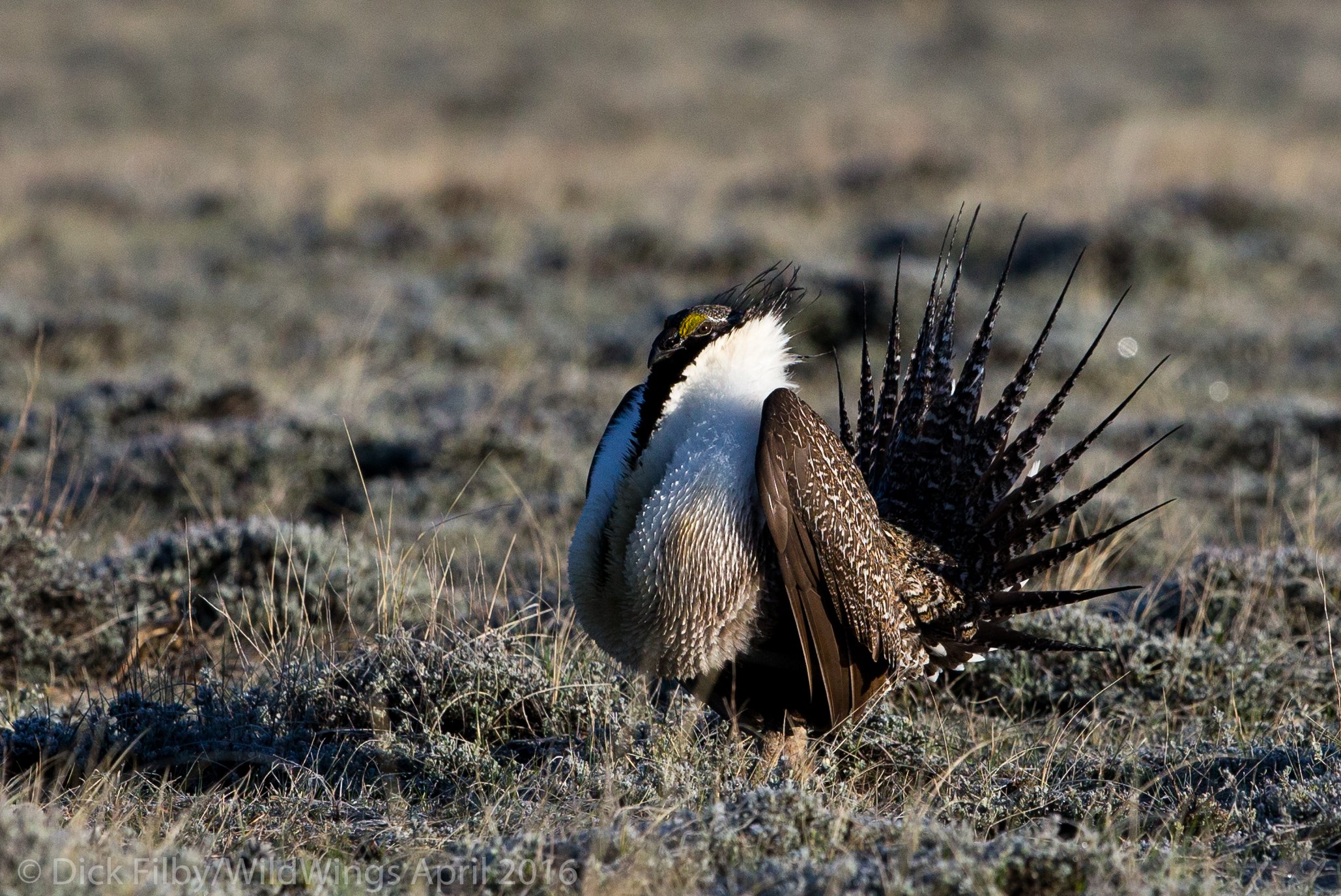
This extremely popular tour led by Dick Filby has been running for well over a decade and combines great birding and incredible scenery making it one of WildWings’ most popular sell-out trips.
Many birds and mammals are found more easily in Colorado than anywhere else and as Dick typically spends several months each year in Colorado, he knows where to find them. The primary focus of this trip are the grouse leks for which Colorado is rightly famous, with more grouse species found here than anywhere else in North America. Indeed, there is no better place to view them!!
The leks are totally spellbinding with some of the most incredible display rituals in the avian world with each species having its own unique and bizarre performance which involves ritualised dancing, inflation of brightly coloured air sacs, curious vocalisations and extraordinary posturing.
As we travel around the state in search of the different species, we will position ourselves at each lek prior to dawn and thrill to a new spectacle unfolding as the sun rises. We will spend an hour or more spellbound until the frenzied activity of the males diminishes, the visiting females have departed, and we too head off for breakfast.
We plan to visit leks of Greater Sage-Grouse, the recently split Gunnison Sage-Grouse, Sharp-tailed Grouse, Greater Prairie Chicken and Lesser Prairie Chicken. In addition, we will seek displaying Dusky Grouse and Wild Turkeys, coveys of Scaled and Gambel’s Quails and, subject to permissions and weather, will look for the enigmatic and beautiful White-tailed Ptarmigan.
As we search for the ptarmigan, you will be truly on the roof of North America, above the treeline at 12,000 feet atop the Rocky Mountains. Nearby peaks are over 14,000 feet.
We will look for numerous other exciting birds, some of which are not readily seen in much of the rest of the USA including American White Pelican, White-faced Ibis, Barrow’s Goldeneye, Bufflehead, Hooded Merganser, Bald Eagle, Swainson’s Hawk, Prairie Falcon, Sandhill Crane, Mountain Plover, American Avocet, Willet, Long-billed Curlew, Marbled Godwit, Franklin’s Gull, White-throated Swift, Black-chinned and Broad-tailed Hummingbirds, Belted Kingfisher, Lewis’s, Red-bellied, Ladder-backed, Downy and Hairy Woodpeckers, Northern Flicker, Williamson’s and Red-naped Sapsuckers, Say’s Phoebe, Cassin’s and Western Kingbirds, Violet-green and Cliff Swallows, Canada, Steller’s, Woodhouse’s Scrub and Pinyon Jays, Clark’s Nutcracker, Mountain Chickadee, Juniper Titmouse, Bushtit, White-breasted and Pygmy Nuthatches, Rock, Canyon, Bewick’s and Marsh Wrens, American Dipper, Eastern, Western and Mountain Bluebirds, Townsend’s Solitaire, Sage and Curve-billed Thrashers, Cedar Waxwing, Loggerhead Shrike, Green-tailed, Spotted and Canyon Towhees, Cassin’s, Rufous-crowned, Chipping, American Tree, Brewer’s, Vesper, Lark, Savannah, Grasshopper, Fox, Song, Lincoln’s, and White-crowned Sparrows, Chestnut-collared and Thick-billed Longspurs, Brewer’s and Yellow-headed Blackbirds, Western Meadowlark, Grey-crowned, Brown-capped and Black Rosy Finches, Pine Grosbeak, Cassin’s Finch, Lesser and American Goldfinches and Evening Grosbeak.
This tour offers an excellent chance to see many of these species in summer plumage on their breeding grounds and we will also have the opportunity, if the weather co-operates, to seek several species of owls including Burrowing, Western and Eastern Screech and Great Horned. If luck is truly on our side, we may also find a Northern Saw-whet Owl, a Northern Pygmy Owl or even a Boreal (Tengmalm’s) Owl.
Another fantastic aspect of this trip is the scenery, starting with the seemingly endless rolling vistas of the High Plains giving us a sense of freedom and space that is difficult to find in many other parts of the world. In the Rocky Mountains, we will see dramatic peaks still capped in snow towering over great forests and deep gorges carved by gushing rivers.
This trip has consistently recorded at least 25 species of mammals, which has, on occasion, included Mountain Lion (Puma), Bobcat, Black Bear, Bighorn Sheep, Mountain Goat, Moose, Elk, American Badger and many more.
Whilst this tour is not designed specifically for photographers, it offers some good chances for bird photography at some (but not all) leks and elsewhere, although longer lenses are generally needed to maximise on the opportunities. Digi-scoping can be excellent, as can the scenic photography.
The trip is intended for birders who are prepared to go to bed early and get up very early. Basic fitness is essential, but with no long walks planned, this is not a physically demanding tour apart from the early starts. We will generally be birding from, or close to the vehicle, or from hides.
Travel is by 15 passenger van, with a maximum of seven participants. Whilst there are some days with longer drives between overnight stays, this is balanced with days where we plan to have shorter drives, of around 100 miles or less.
Potential Birds (selected species only)
American White Pelican, White-faced Ibis, Snow Goose, Ross’s Goose, Wood Duck, Blue-winged Teal, Cinnamon Teal, Canvasback, Redhead, Barrow’s Goldeneye, Bufflehead, Hooded Merganser, Bald Eagle, Swainson’s Hawk, Ferruginous Hawk, Rough-legged Hawk, Red-tailed Hawk, Prairie Falcon, Scaled Quail, Gambel’s Quail, Northern Bobwhite, Greater Sage-Grouse, Gunnison’s Sage-Grouse, White-tailed Ptarmigan, Dusky Grouse, Sharp-tailed Grouse, Greater Prairie Chicken, Lesser Prairie Chicken, Wild Turkey, Virginia Rail, Sandhill Crane, Mountain Plover, Killdeer, American Avocet, Willet, Long-billed Curlew, Marbled Godwit, Semipalmated Sandpiper, Least Sandpiper, Western Sandpiper, Baird’s Sandpiper, Long-billed Dowitcher, Wilson’s Snipe, Wilson’s Phalarope, Franklin’s Gull, Bonaparte’s Gull, Ring-billed Gull, California Gull, Western Screech-Owl, Eastern Screech-Owl, Great Horned Owl, Northern Pygmy Owl, Burrowing Owl, Boreal (Tengmalm’s) Owl, Northern Saw-whet Owl, Common Poorwill, Chimney Swift, White-throated Swift, Black-chinned Hummingbird, Broad-tailed Hummingbird, Belted Kingfisher, Lewis’s Woodpecker, Red-bellied Woodpecker, Ladder-backed Woodpecker, Downy Woodpecker, Hairy Woodpecker, Northern Flicker, Williamson’s Sapsucker, Red-naped Sapsucker, Eastern Phoebe, Say’s Phoebe, Cassin’s Kingbird, Western Kingbird, Horned Lark, Tree Swallow, Violet-green Swallow, Northern Rough-winged Swallow, Cliff Swallow, Canada Jay, Steller’s Jay, Blue Jay, Woodhouse’s Scrub Jay, Pinyon Jay, Clark’s Nutcracker, Black-billed Magpie, Chihuahuan Raven, Black-capped Chickadee, Mountain Chickadee, Juniper Titmouse, Bushtit, Red-breasted Nuthatch, White-breasted Nuthatch, Pygmy Nuthatch, Rock Wren, Canyon Wren, Bewick’s Wren, House Wren, Marsh Wren, American Dipper, Eastern Bluebird, Western Bluebird, Mountain Bluebird, Townsend’s Solitaire, Sage Thrasher, Curve-billed Thrasher, American Pipit, Cedar Waxwing, Loggerhead Shrike, Green-tailed Towhee, Spotted Towhee, Canyon Towhee, Cassin’s Sparrow, Rufous-crowned Sparrow, Chipping Sparrow, American Tree Sparrow, Brewer’s Sparrow, Vesper Sparrow, Lark Sparrow, Savannah Sparrow, Grasshopper Sparrow, Fox Sparrow, Song Sparrow, Lincoln’s Sparrow, White-crowned Sparrow, Dark-eyed Junco, Chestnut-collared Longspur, Thick-billed Longspur, Red-winged Blackbird, Brewer’s Blackbird, Yellow-headed Blackbird, Western Meadowlark, Great-tailed Grackle, Grey-crowned Rosy Finch, Brown-capped Rosy Finch, Black Rosy Finch, Pine Grosbeak, Cassin’s Finch, Pine Siskin, Lesser Goldfinch, American Goldfinch, Evening Grosbeak.
Potential Mammals (selected species only)
American Pika, Desert Cottontail, Eastern Cottontail, Mountain Cottontail, Snowshoe Hare, Black-tailed Jackrabbit, White-tailed Jackrabbit, Least Chipmunk, Colorado Chipmunk, Yellow-bellied Marmot, Wyoming Ground-Squirrel, Golden-mantled Ground-Squirrel, Spotted Ground-Squirrel, Thirteen-lined Ground-Squirrel, Rock Squirrel, White-tailed Antelope-Squirrel, Gunnison, White-tailed and Black-tailed Prairie-Dogs, Abert’s Squirrel, Fox Squirrel, Pine Squirrel, Ord’s Kangaroo-Rat, American Beaver, Common Muskrat, Common Porcupine, Coyote, Swift Fox, Red Fox, Grey Fox, Black Bear, Raccoon, American Marten, Ermine (Short-tailed Weasel), Long-tailed Weasel, Mink, American Badger, Northern River Otter, Striped Skunk, Mountain Lion, Bobcat, Elk, Mule Deer, White-tailed Deer, Moose, Pronghorn, Mountain Goat, Mountain Sheep.
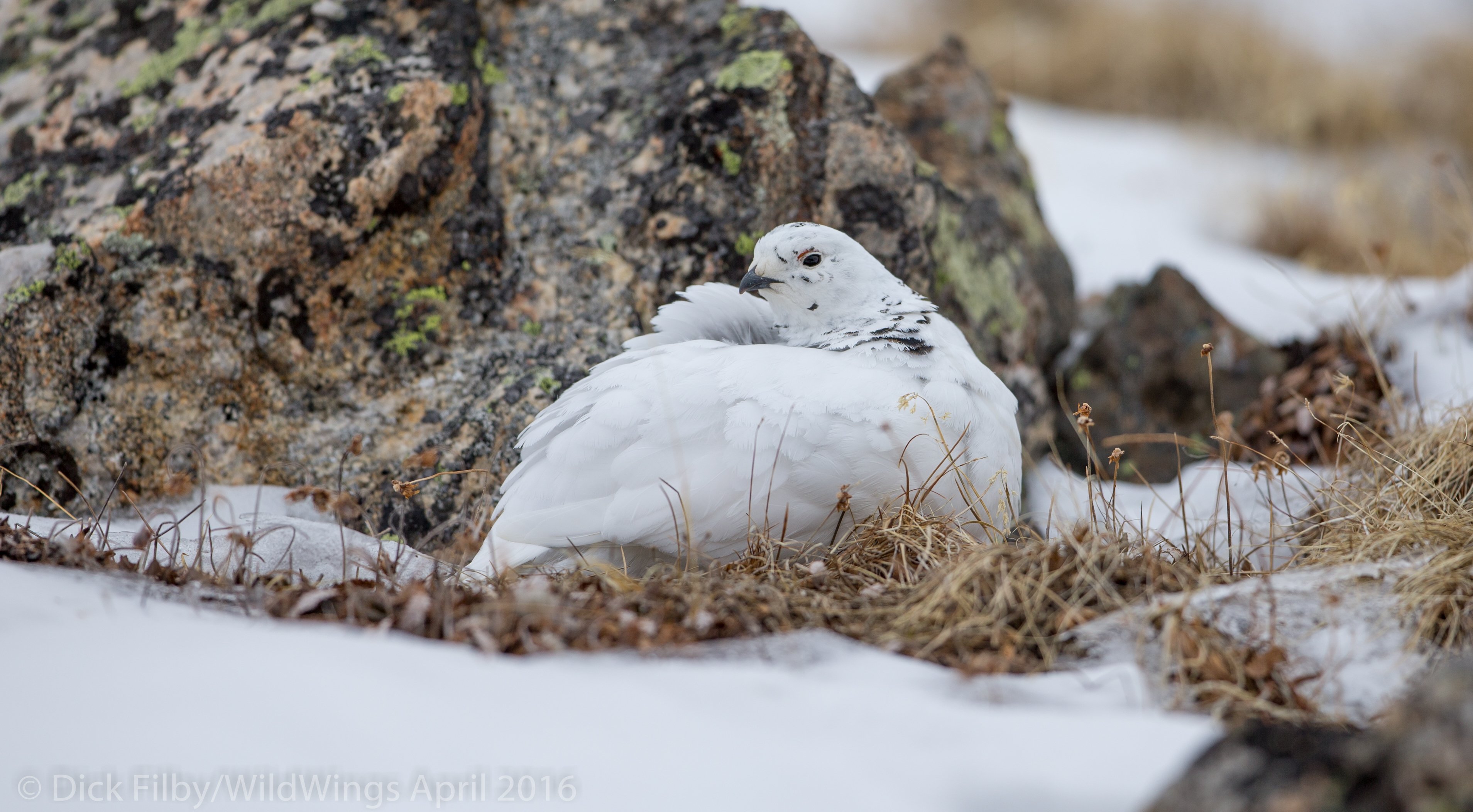
Day 1: Arrive Denver. Overnight hotel
Fly to Denver where your tour leader, Dick Filby, will meet you at the airport terminal from where there will be a short walk to the tour van. Overnight Denver (5,100 ft).
Day 2: The Eastern Plains. Drive to Wray, birding en route
We will make an early start to drive (c.90 minutes) to the Fort Collins area where we will start birding, and then onto private lands in the short-grass prairie to the east, where, with luck we may find early arriving Mountain Plover, Chestnut-collared and Thick-billed Longspurs, all of which should be in breeding plumage. Raptors often feature highly on the day’s birding, with up to ten species possible.
After a full morning birding, we head east to the small town of Wray. Overnight Wray (c.4,000 ft).
Day 3: Greater Prairie Chicken lek, then drive to SE Colorado
Rising very early, we shall head to a nearby private Greater Prairie Chicken lek, thrilling at the bizarre spectacle unfolding in the dawn light. Their eerie vocalisations and display manoeuvres with their rich orange coloured throat sacs are a sight to behold.
We will then drive back to town for breakfast and then head southeast for approximately 200 miles into western Kansas to a motel convenient for a Lesser Prairie Chicken lek.
Day 4: Lesser Prairie Chicken lek then drive to private ranch adjacent to the Comanche Grasslands
We plan to leave the motel very early to be in position at a Lesser Prairie Chicken lek just prior to dawn to observe the spectacle that can last for up to an hour or more. The males erect their crests, bow their necks, inflate purple air sacs on the side of their throats and strut purposefully as they defend a small area on the lek, chasing off intruding males and hoping to impress any visiting females.
This rapidly declining species is under severe pressure due to a number of factors including drought and changes in agricultural practices and we may only see a couple of males. To ensure as little disturbance as possible, we will keep our distance and this lek will be best viewed with a telescope. Whilst the birds may often be obscured in the low vegetation, they will be more obvious when they leap into the air.
As well as the Lesser Prairie Chickens, Western Meadowlarks and Horned Larks (Shorelarks) are common on the plains and often sing at dawn, and we may also hear, or even see, Grasshopper Sparrow.
After returning to the motel for breakfast, we will set off southwest, stopping at birding spots en-route to our next destination, a private ranch adjacent to the Comanche National Grasslands, a drive of some 200 miles, on mostly empty roads.
We will keep a special lookout for Long-billed Curlew, Mountain Plover and Ferruginous Hawk. After arriving at the ranch, you will have the opportunity to relax or head out birding on the ranch.
Dinner at the ranch is self-catering, and after dark and weather permitting, we may take a drive in search of night birds, notably Western Screech-Owl and mammals such as Ord’s Kangaroo Rat, Raccoon, Western Striped Skunk, White-tailed Deer, Mule Deer and Elk.
On one previous tour, we encountered a Bobcat just after dusk and incredibly later on that same evening, we watched a Mountain Lion (Puma) which is the only one we have ever seen on the tour. We have seen Black Bears here on a couple of occasions. Overnight 5,000ft
Day 5: Birding on private ranch, then drive into the Rocky Mountains over Monarch Pass to Gunnison
This morning you have the option of a more leisurely start or the opportunity to go out at dawn to explore the ranch, nearby canyons and surrounding area. In 2008, the early risers had magnificent views of a Bobcat as it sauntered down the track in front of the van as we were returning to the ranchhouse for breakfast.
Amongst the specialist birds that we will seek are Canyon Towhee, Ladder-backed and Lewis’s Woodpeckers, Rock, Canyon and Bewick’s Wrens, Rufous-crowned Sparrow and the elusive Greater Roadrunner, which here is at the very edge of its range.
After a hearty ranch breakfast, we set off for the lengthy drive west to Gunnison (c.300 miles), driving via Pueblo, and then high into the heart of the Rocky Mountains and into a snow-covered landscape. We plan to cross the Continental Divide using Monarch Pass (11,312ft) and then down into the Gunnison Basin. En-route we will stop for lunch and also make some roadside birding and ‘comfort’ stops. This drive is the last of the longer drives of the trip, all the other planned overnight stops are much closer to each other. Overnight Gunnison (7,700 ft).
Day 6: Gunnison Sage-Grouse lek then birding our way to overnight in Montrose
We will position ourselves at a Gunnison Sage-Grouse lek at dawn. The grouse conduct their lek on a pasture with a mountainous backdrop that provides a dramatic contrast to the endless vistas of the plains. Gunnison Sage-Grouse is endangered, specially protected, and easily disturbed, so at this lek, we are much further from the birds than at other leks and you will certainly really appreciate the use of a telescope.
This species often leaves the lek before the sun is over the horizon, so to make the most of the early views, we recommend having your own scope.
After the birds have left the lek, we return to our motel for breakfast, before setting off down the Gunnison River valley for the Grand Junction area.
We plan to drive the length of Blue Mesa reservoir, making a roadside stop or two, before possibly visiting the Black Canyon of the Gunnison National Monument, although this may still be closed by snow. As we travel, we will keep a close watch for Mountain Bluebirds as they can be found in this area.
The Black Canyon, never more than a mile wide, is in places just 1,300 feet wide and almost 2,500 feet deep and it is nothing short of thrilling to stand behind the barriers right on the rim at the scenic viewpoints. American Dippers can sometimes be seen on the river, almost half a mile below us!
The first White-throated Swifts of the summer may be wheeling far below, whilst we seek Canyon Wrens that sing from unseen perches. In the roadside Pinyon-Juniper and Gambel Oak scrub (which is typical of the dry ‘west slope’ of the Rockies), we will have our first opportunity to search for specialists such as Dusky Grouse, Juniper Titmouse, Woodhouse’s Scrub Jay, Pinyon Jay, Western Bluebird and Clark’s Nutcracker, whilst overhead, or in the canyon below, we will keep a look out for the occasional Golden Eagle, Cooper’s Hawk or even a Prairie Falcon.
Our accommodation is close by, so if we did not see a Dusky Grouse earlier in the day, we will be able to return for a late afternoon attempt as this species is most readily found at dusk or dawn. The lone male, uttering a deep resonant thumping noise as he displays, tail fanned, is truly a sight to behold. Overnight Montrose (5,300 ft).
Day 7: Looking for more Western specialities including Dusky Grouse. Overnight Grand Junction area
If we have not seen it already, we will spend the early morning back at the Black Canyon continuing our search for Dusky Grouse before we head to Grand Junction and the spectacular Colorado Monument National Park where one of our target birds is the delightful Gambel’s Quail. Other birds in this area could include Rock and Canyon Wrens, Western Bluebird, Townsend’s Solitaire, Juniper Titmouse, Black-throated Sparrow and the mobile and elusive Pinyon Jay.
If we are fortunate, we may find a roosting Western Screech Owl, and Great Horned Owls are usually easier to find around here than in many other places.
Before we head back to the mountains, we will have the first opportunity to seek out the recently split Sagebrush Sparrow. Later, and depending on the weather, we may search for owls after dinner. Possibilities include Northern Saw-whet and Northern Pygmy-Owl and, with very good luck, maybe even a Boreal (Tengmalm’s) Owl. Overnight Grand Junction area (self-catering apartments, where we will bring our own food).
Day 8: Colorado River and valleys of the Central Rockies including looking for nesting Bald Eagles
Before breakfast we have the opportunity to search for Canada Jay, American Three-toed Woodpecker, Red-naped Sapsucker, Cassin’s Finch and Pine Grosbeak, before we head off to some local reservoirs in search of breeding Western and Clarke’s Grebes, Marsh Wren, and, with good luck we may hear a Sora or a Virginia Rail.
We will also be alert for migrant waterfowl, gulls, terns and waders, whilst nearby, in favoured cottonwood groves we can find the spectacular Lewis’s Woodpecker.
Later in the day we have an opportunity to search for Barrow’s Goldeneye and nesting Bald Eagles. Overnight Carbondale (6,100 ft)
Day 9: Snowmass and private areas in the Roaring Fork Valley for Rosy Finches, Barrow’s Goldeneye etc
Our birding day starts in the Roaring Fork Valley, a fast flowing tributary of the Colorado River where we will look for American Dipper and Bald Eagle. A nearby lake often holds lingering Barrow’s Goldeneyes amongst a host of other wildfowl, and we will visit some private birdfeeders near the Snowmass ski resort which often attract Mountain Chickadee, Steller’s Jay, Hairy Woodpecker and Clark’s Nutcracker.
Our main goal here, however, will be to find some lingering Rosy Finches, perhaps of all three North American species, and sometimes one or both of the amazing duo of Pine Grosbeak and Evening Grosbeak.
After brunch we will have a final opportunity to seek any of the Pinyon/Juniper specialists that we may have missed before we head north, across the Colorado River and into northwest Colorado, with some roadside birding en-route. After checking in at our motel, we will have an early dinner in order that we are ready for another very early start. Overnight in the Steamboat Springs area (c6,700 ft).
Day 10: Sharp-tailed Grouse lek
Before first light, we will head to a private Sharp-tailed Grouse lek. Their eerie calls and bizarre wing-quivering display are quite unlike any of the other leks and it is a real delight to witness the males charging around like clockwork toys, stopping abruptly to face-off rivals, and leaping into the air to gain dominance.
There is also another chance to find a Dusky Grouse nearby and Sandhill Cranes can often be found nearby too. This is one of the few areas in Colorado where Bald Eagles regularly breed and Sagebrush Sparrows occur in this area, as do American Three-toed Woodpeckers and Canada Jays, so we have another opportunity if we failed to find any of them earlier in the trip. Overnight in the Steamboat Springs area (c6,700 ft).
Day 11: Greater Sage-Grouse lek, then to the 'Roof of the Rockies' in search of White-tailed Ptarmigan
We will be positioned at a lek for Greater Sage-Grouse prior to dawn. Perhaps the most regal looking of all the grouse that we hope to see, their huge throat pouches wobble almost grotesquely as they strut around, throwing their heads back whilst uttering deep and guttural booming sounds that carry for half a mile or more across the plain. Holding their long and pointed tail feathers erect, in a similar fashion to an Indian Peafowl, they are very dramatic to watch. We will watch closely as the sparring males compete for the females’ attention, occasionally drawing blood from their competitors.
Set in the inter-montane plains of northwest Colorado, this is one of the few remaining areas of the state where a seemingly almost-statewide housing boom has yet to reach. We may visit Walden reservoir which has breeding colonies of California Gulls and American White Pelicans and is a great place to see a good variety of wildfowl and usually a few waders which could include American Avocet.
In the late morning, we will leave the northwest of Colorado behind as we set off for Georgetown which is just 125 miles away across the Continental Divide. It is a very scenic drive and we will have another opportunity to look for any lingering Rosy Finches.
Weather (and Forest Service permit) allowing, and only a few miles from Georgetown, we head to the top of the Continental Divide at some 12,000 feet. Here, above the treeline, surrounded by some of the highest peaks in the state, all still buried in snow, it is possible to find White-tailed Ptarmigan near the roadside.
In April, the ptarmigan are still mainly in their pure white winter plumage (only the eyes, bill and feet are black) so finding them can be quite a challenge as they merge almost imperceptibly into the snow. Scanning diligently from the roadside pull-offs is the preferred option, and being close to the van is always a great option in near-freezing and often windy conditions! Overnight Georgetown (8,500 ft).
Day 12: Ponderosa Forest specialities and other ‘Front Range Hills’ species then back to Denver
If our search for White-tailed Ptarmigan yesterday was unsuccessful, we may have another opportunity early morning before we head off to explore the Ponderosa Pine and Douglas Fir forests of the Front Range. We will be in search of specialities such as the western form of White-breasted Nuthatch, as well as Red-breasted and Pygmy Nuthatches, Downy and Hairy Woodpeckers, Red-naped and Williamson’s Sapsuckers, and Western Bluebirds and there are also chances for the extremely elusive Northern Pygmy Owl. If time allows we can take the opportunity to check Denver area lakes and surrounding vegetation for migrants. Overnight near Denver Airport (5,100ft)
Day 13: Final morning of birding concluding at Denver Airport. Departure from Denver with overnight flight
Early in the morning, we have the opportunity for some final birding in the Denver area before we drive to Denver Airport and the conclusion of the tour in the early afternoon.
Anyone with a mid-evening flight may wish to hire a car for the afternoon or a day room at a local hotel (not included) or head straight to the airport, where there are plenty of restaurants and lounges.
Day 14: Arrive back in UK
NB: the exact itinerary will be subject to weather and local conditions and is subject to government and local permissions.
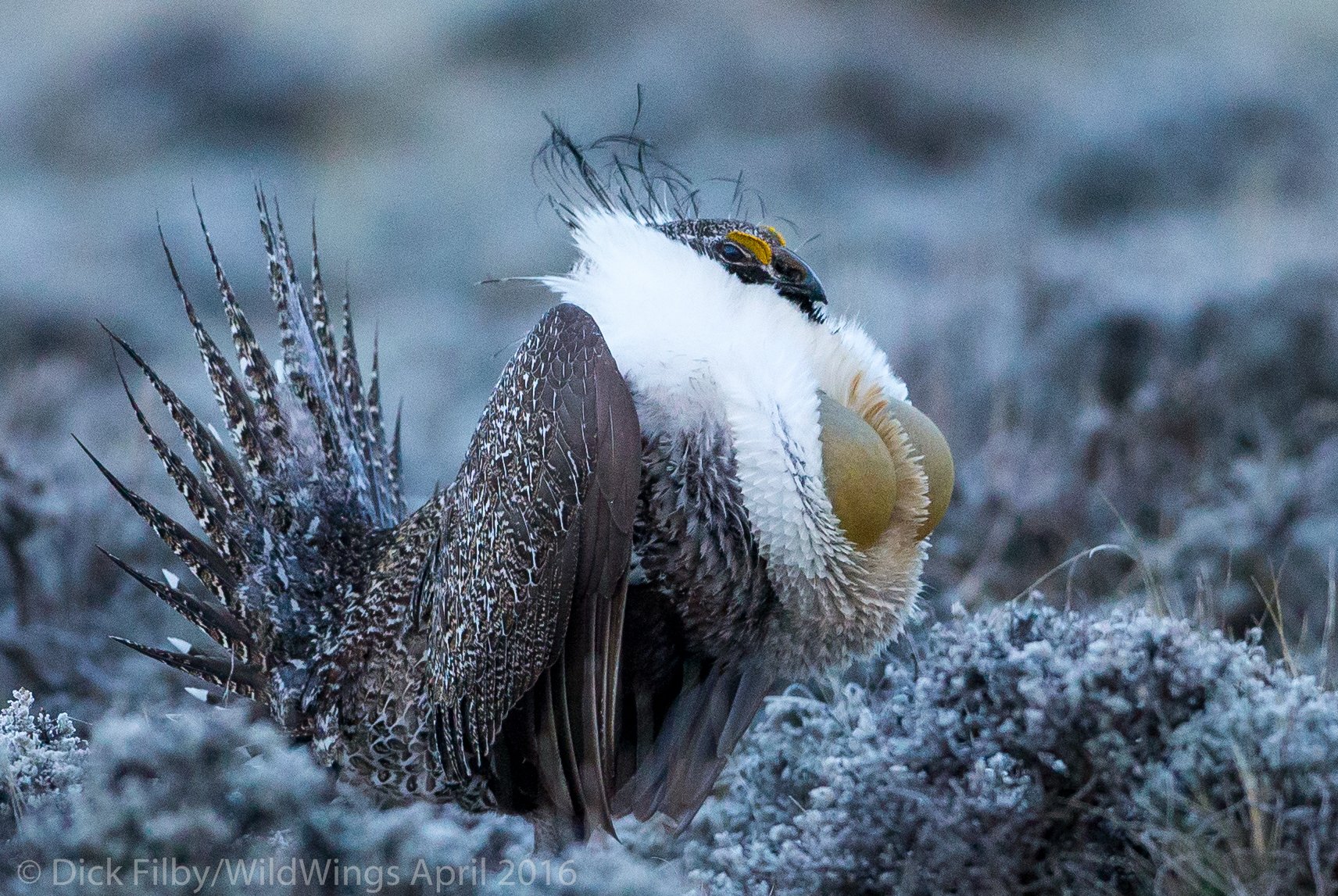
Weather: Whilst Colorado is famous for its sunny climate, with an average of over sunny 300 days a year, always remember that “climate is what we expect, and weather is what we get”. It is, therefore, important to be prepared for the same sort of weather as an English Spring, ie a real mixture, with the expectation that at some point there will be some rain and/or snow.
Dawn at all the grouse leks is often frosty, both on the plains and in the mountains. Once the sun is up however, the temperature usually rises steadily and can often reach the mid 20s Celsius (mid to upper 70s Fahrenheit) or even warmer, especially on the eastern plains, and nearly that high in the mountains.
If we encounter a cold snap, especially when high in the Rocky Mountains, we may have midday temperatures close to or even well below freezing. It is the wind, however, that makes the most difference, with even a gentle breeze turning a mild day into a cold one.
The weather in the mountains is notoriously quick to change. A sunny warm spring morning can turn into a sub-zero afternoon with half a foot of snow!
What to bring:
- Telescope and tripod - pretty much essential and angled scopes are better suited for this tour.
- Sunscreen, lipscreen and moisturiser - Colorado air is very dry and the strong sun extremely punishing.
- Sunglasses with UV protection are essential. Bring spares.
- Compass and whistle – essential – keep them in your jacket in case you have to use them for help.
- Travel mug – this is handy for when in the van, although insulated, unspillable ones can be bought locally for about US$25
- Thermos flask - an unbreakable stainless steel flask is highly recommended, especially for cold frosty mornings at the leks. If you don’t like (weak) American coffee or Lipton’s Yellow Label tea, you may want to consider bringing a travel kettle and coffee bags / tea bags from the UK as it is the only way get a proper cuppa!
- Insect repellent for protection against ticks and be sure to carefully check yourself daily for ticks
- Small rucksack/camera bag or daypack eg for spare clothing, gloves, camera stuff etc.
- Disposable hand warmers will provide heat for several hours and are really useful when sitting around at the leks or searching for White-tailed Ptarmigan.
Clothing: use the layers principal to ensure that you can dress up warmly on mornings when the dawn temperature is below freezing and the wind is blowing. Long thermal underwear is definitely appropriate for dawn on this tour with lightweight layers, a fleece and waterproof and windproof outer layer.
Waterproof trousers are essential for keeping the wind out and can be invaluable to stay warm at a lek or on the mountaintop even on a sunny day.
Please remember however that any clothing that “rustles” when you walk is a hindrance to effective birding and the non-essential use of waterproof trousers when birding is strongly discouraged. The resultant swishing impedes everyone (guide included) hearing the birds, and can actually frighten away the birds and mammals that we are trying to see. This also applies to some jackets.
Also, white is the worst colour to wear in the field – it scares birds, as do sudden movements. Please do not bring any white (or nearly white clothing for “in-the-field” use including hats or caps.
Other items to bring include:
- A hat, preferably one with a wide brim, that will help protect your face from the sun.
- Long trousers for the field as on occasions you may need to walk through bushy areas.
- Good walking boots are essential for our search for White-tailed Ptarmigan where we may be walking in snow and will also give useful protection against cactus spines.
- Gloves, scarf, warm hat: totally essential.
- Casual shoes or trainers: attire is casual at all times. Jeans are entirely appropriate at all cafes, motels etc and in the van, although they are nigh-on useless in the field in cold or damp weather.
Money: As food is not included in the tour price, please ensure that you have sufficient US$ cash to settle shared meal bills on the tour. You will, of course, have the freedom to structure your diet to suit yourself. Please be sure to make Dick aware at the beginning of the trip of any special requirements or particular dislikes.
Depending upon your eating preferences allow approximately $40-$70 per day for food and soft drinks.
Please note that it is expected in US restaurants and cafes that you tip 20% as that is how the staff get paid! We will often find that the tip is added automatically for groups, saving you the hassle of working it out. In case of any queries, please check with Dick.
Packed Lunch Kitty: At the beginning of the tour, Dick will ask for a contribution of $250 per person to cover purchase of food for packed lunches, and other self-catering meals as necessary.
Tips: No tips of any sort are included in the tour cost. As noted, the expected tip in all cafes and restaurants is 20%. Not tipping the full 20% is indicative that you felt that you received extremely poor service or quality.
Sales Tax: In the shops, prices are always shown without sales tax, which vary from town to town, but this is generally around 10%
Electricity US power is 110V, requiring plugs with two flat pins.
Luggage: space is limited in the minivan, so please use a soft bag, ie rather than a suitcase, as this will be much easier to stow in the minivan. The luggage is stored in the rear of the van and we will have had a couple of seats removed for this purpose.
Smoking: Colorado law does not allow smoking in almost any enclosed area where others may gather, or even in the vicinity of doorways.
Additionally, it is never permitted to smoke in the immediate vicinity of the group, in the vehicle or whenever the group is gathered for meals, checklists etc.
In the unlikely event that you are a smoker who is sharing a room with a non-smoker, we ask that you never smoke in the room at any time. If you smoke in the field, please only do so well away from and downwind of the group, and take every possible precaution to avoid causing wildfire. Wildfires are a constant danger in the ultra low humidity of Colorado.
Flights: Despite the end of pandemic restrictions, we have taken the decision to continue to price our holidays as excluding international flights.
To keep the process as simple as possible, we are working very closely with a dedicated agent at Travel Counsellors, Sacha Barbato, who is essentially now our “in house” flight consultant.
Sacha will be able to advise you which flights we are recommending for each holiday, and he will be able to book these for you.
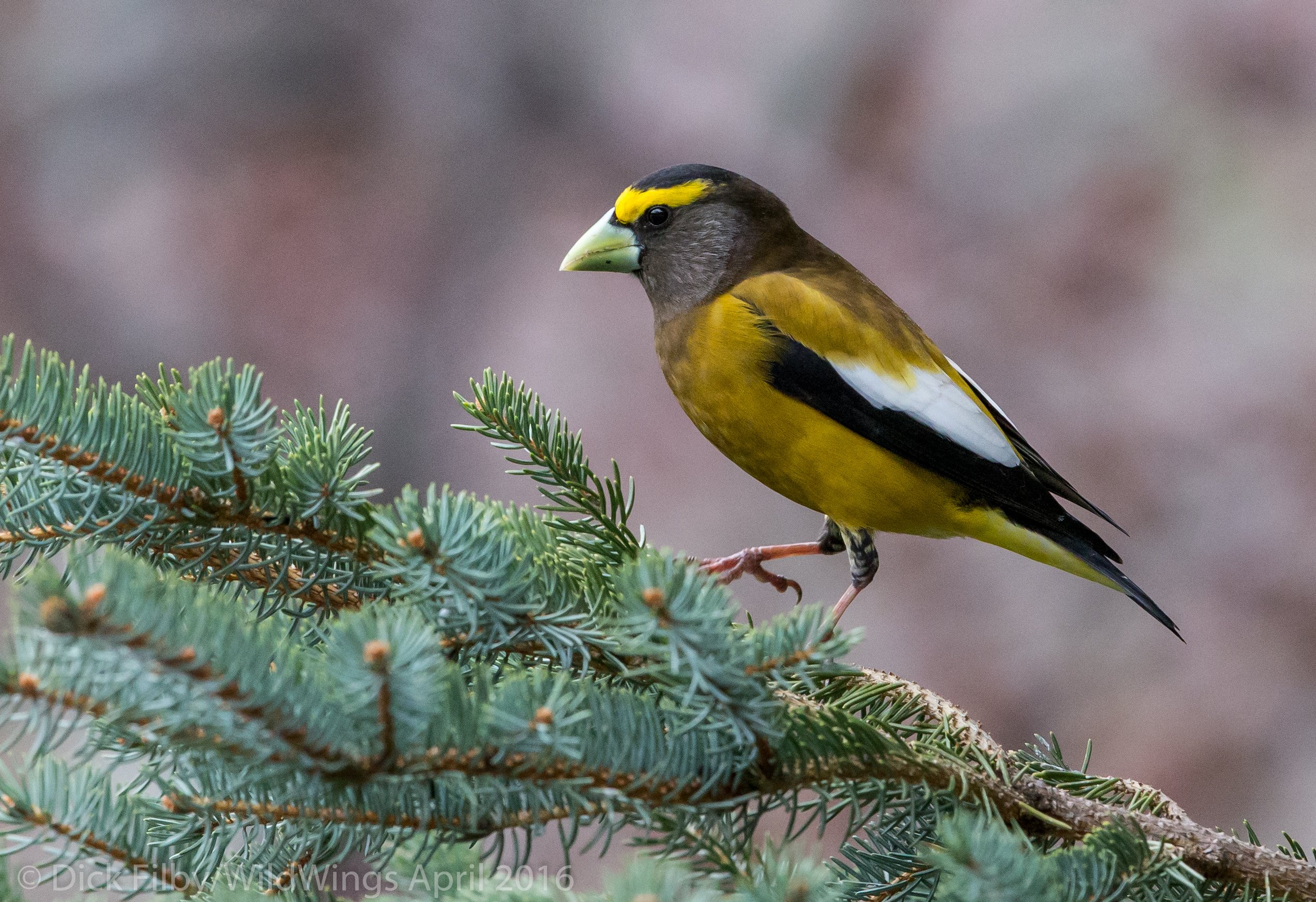
Tour Gallery
View a gallery of images for this tour below, click on an image to view as full size with caption
